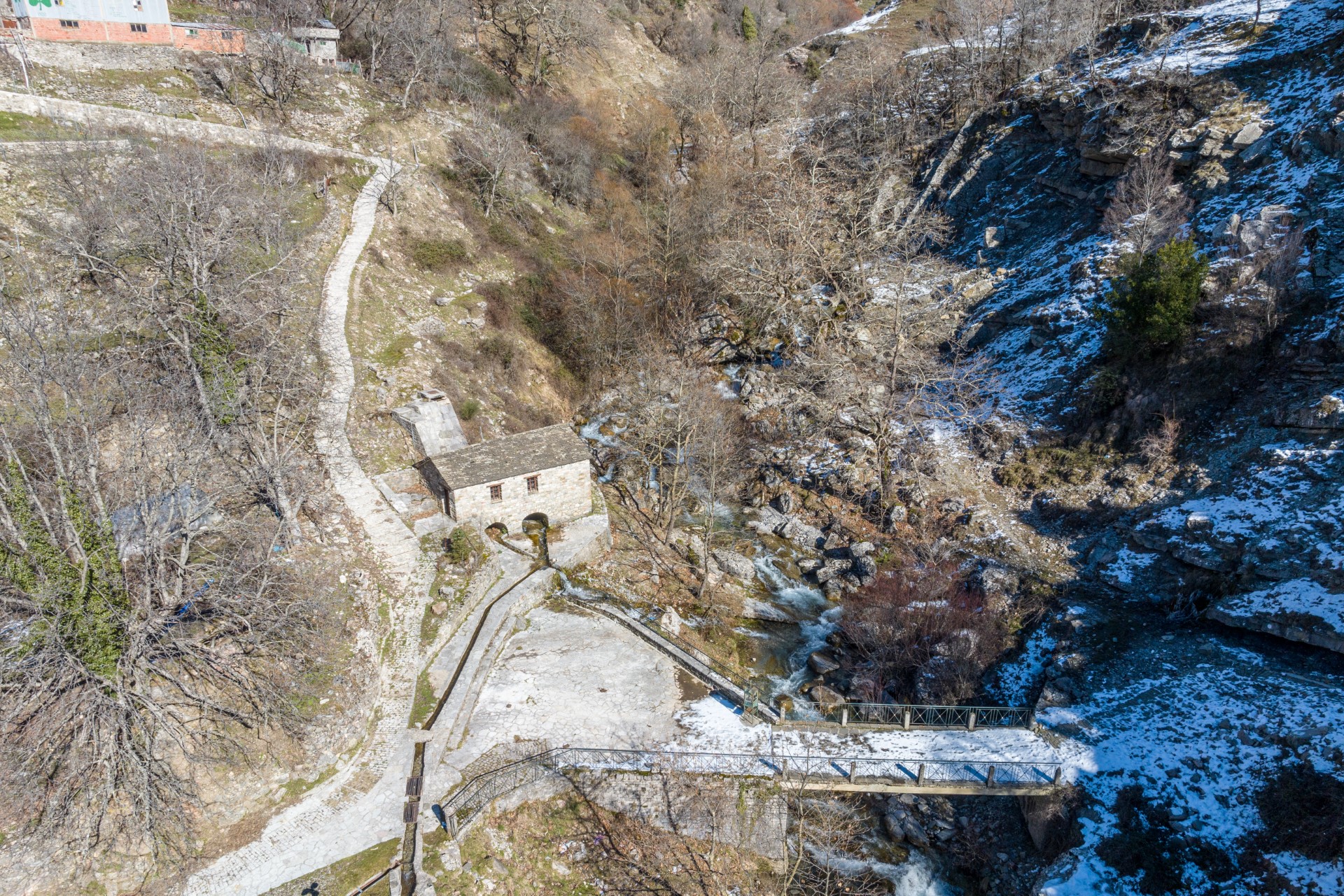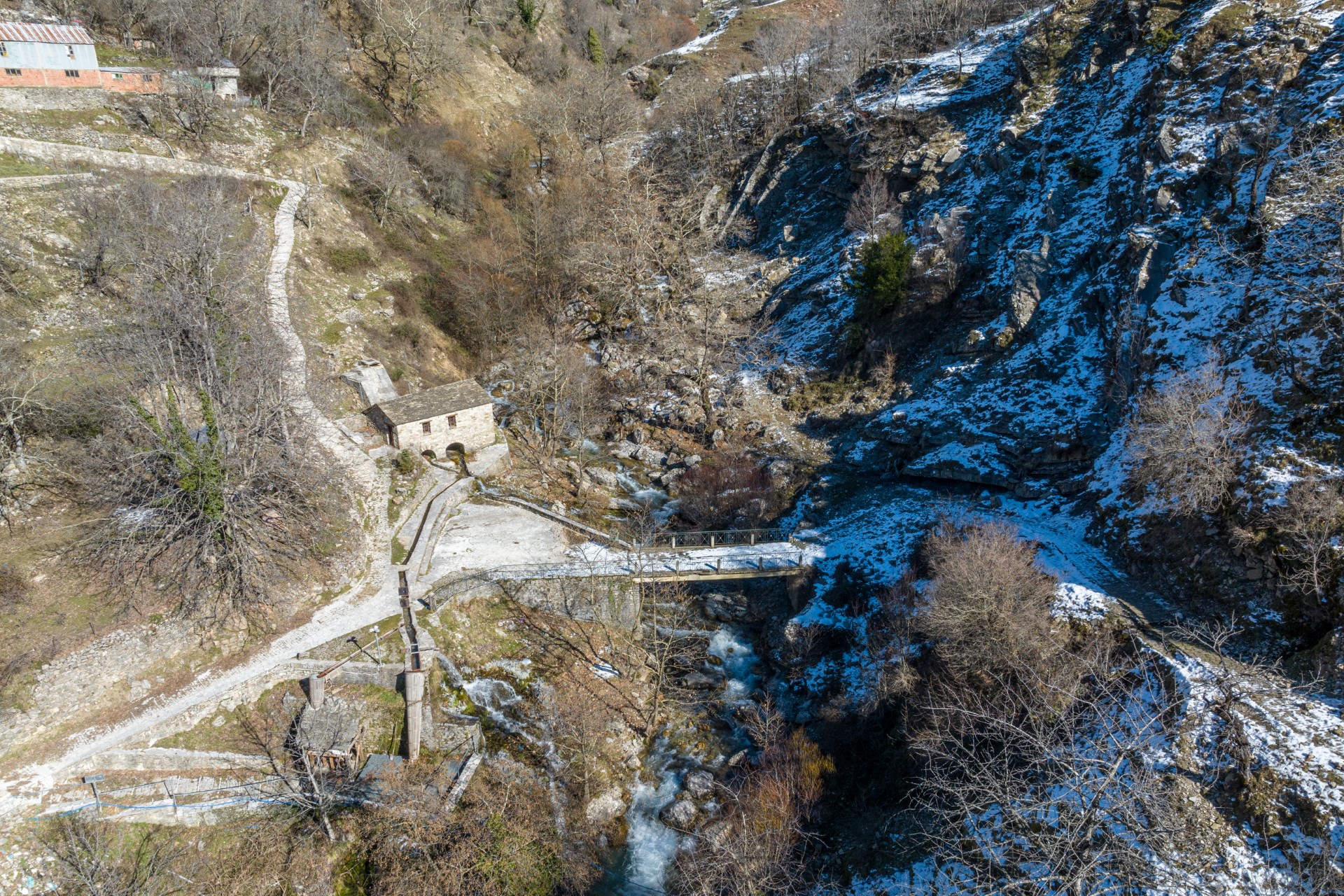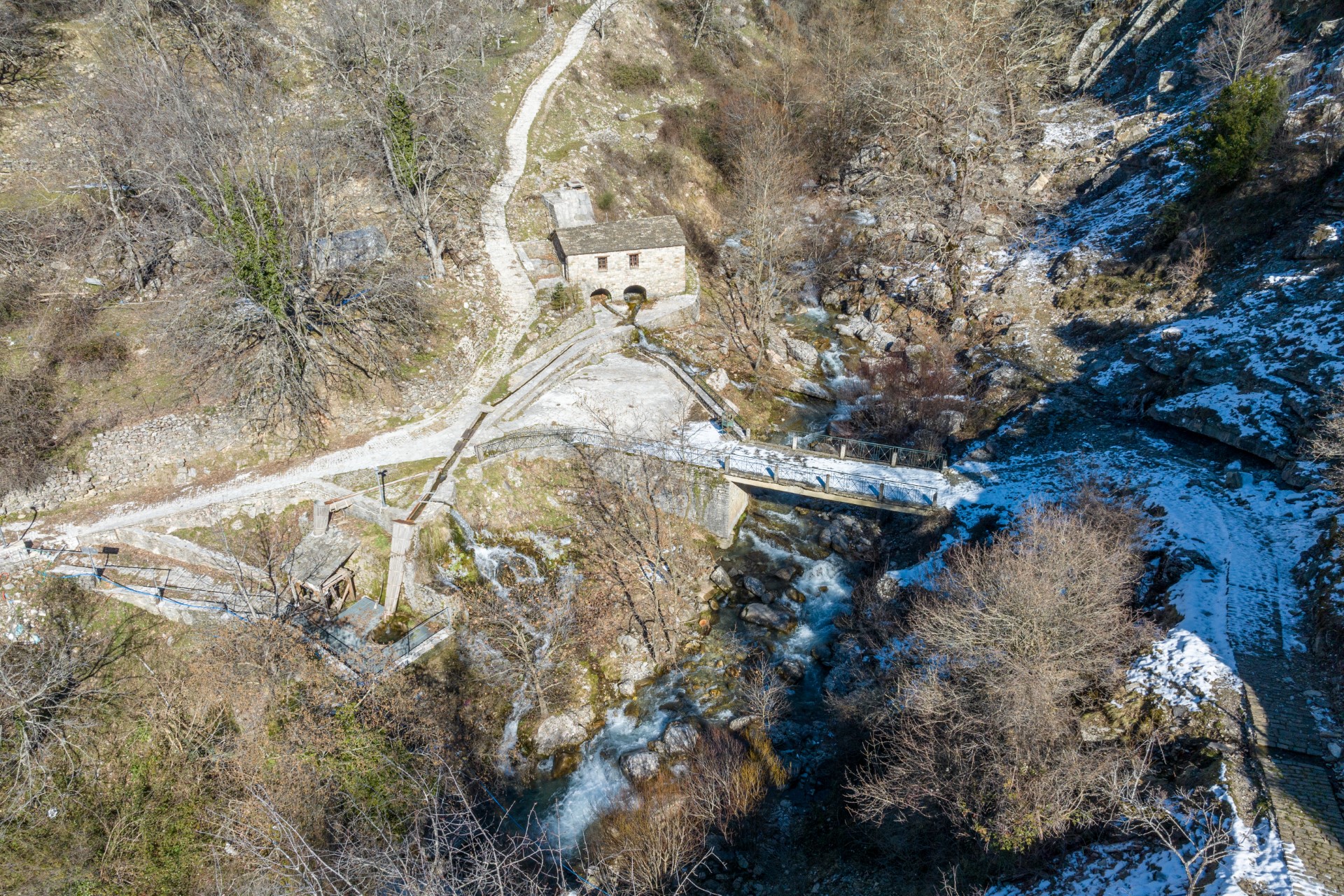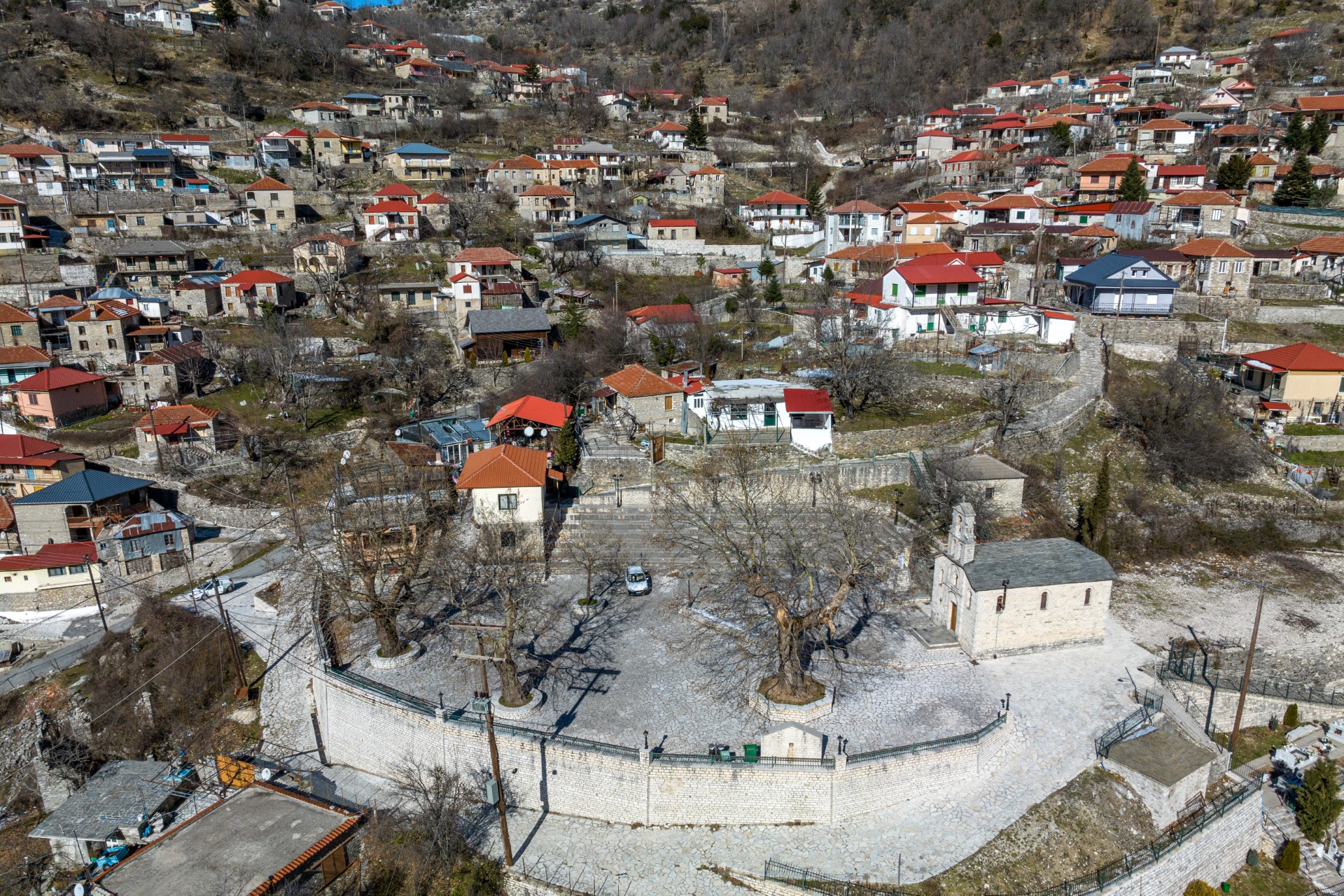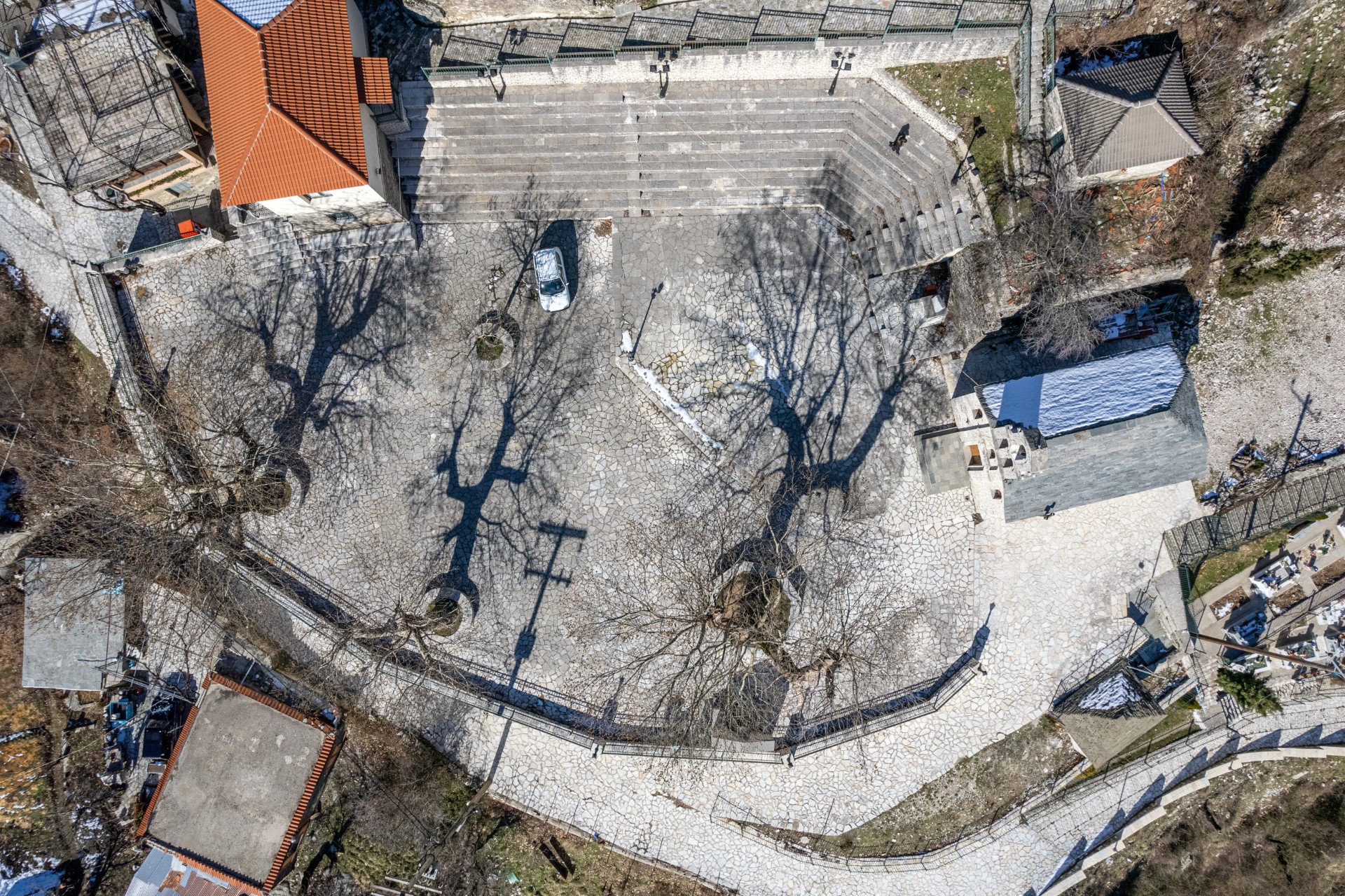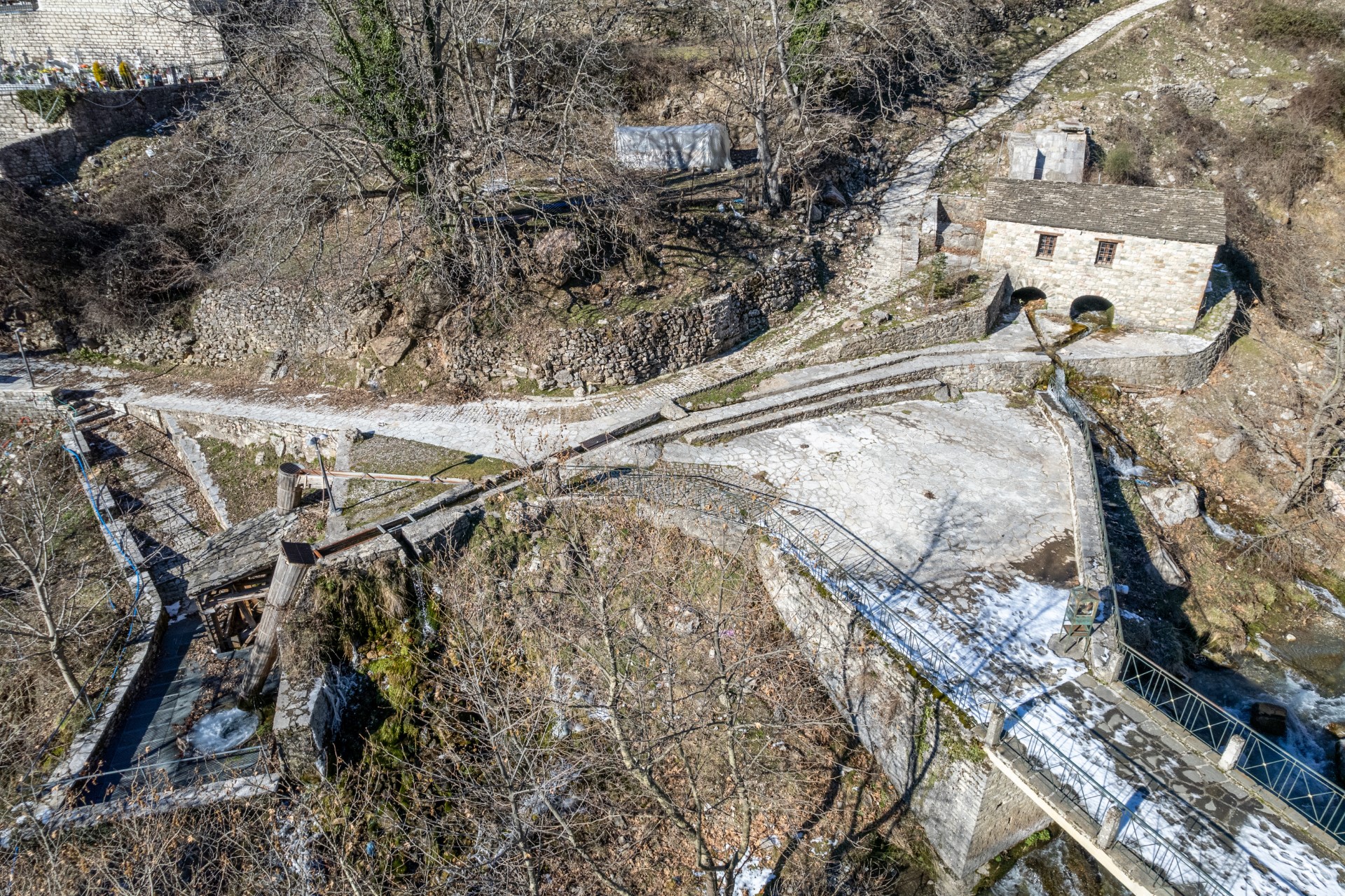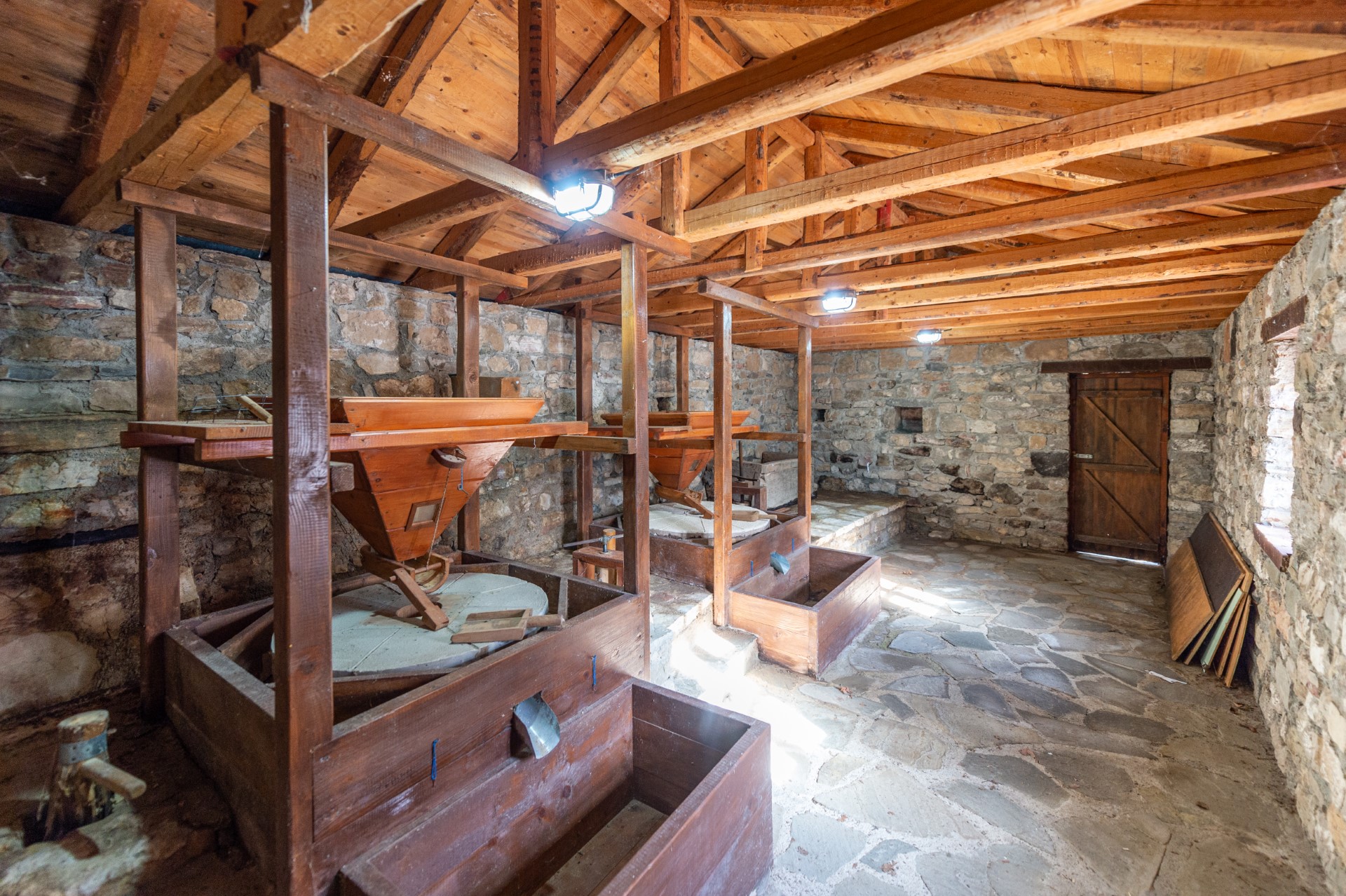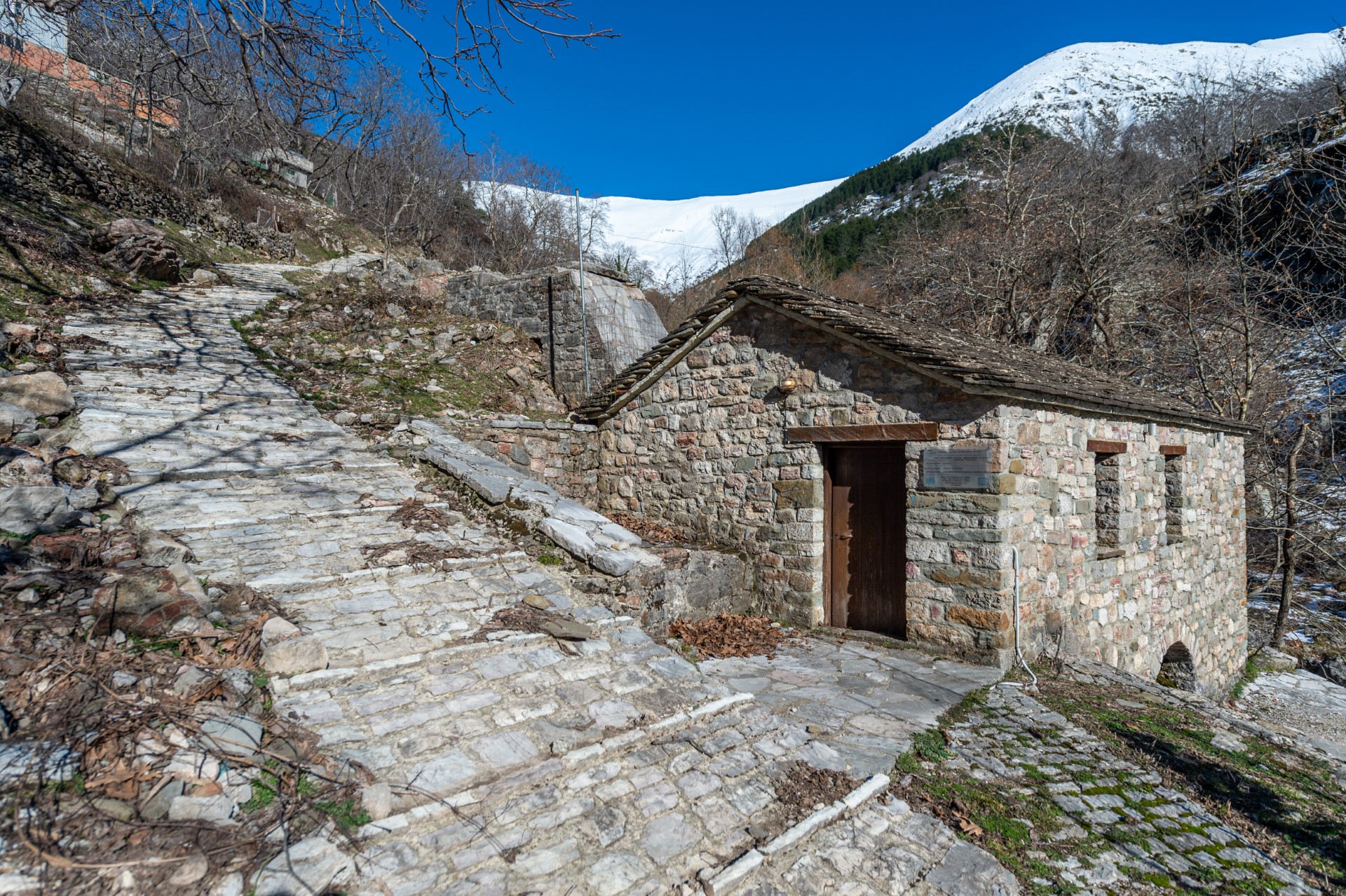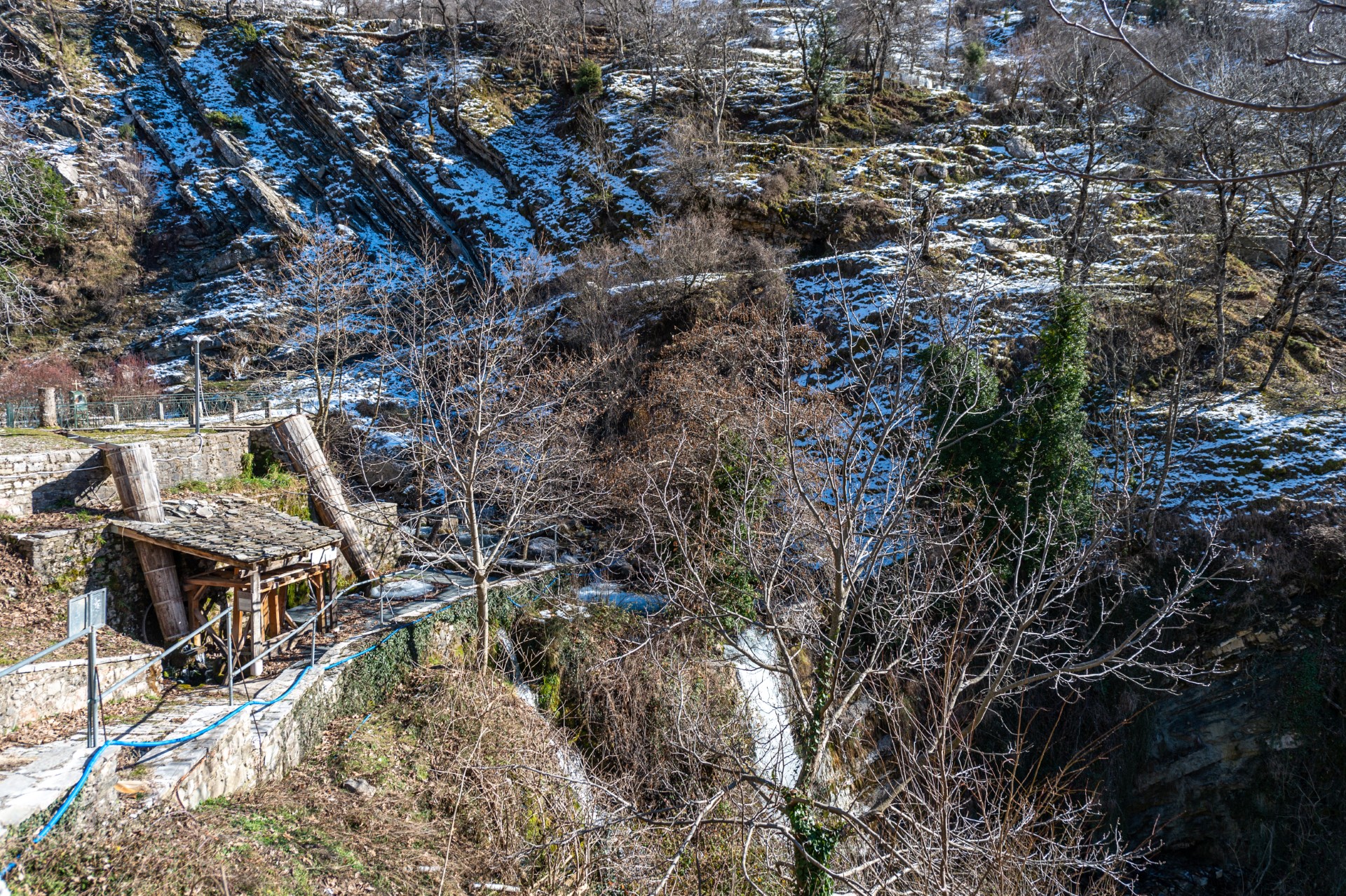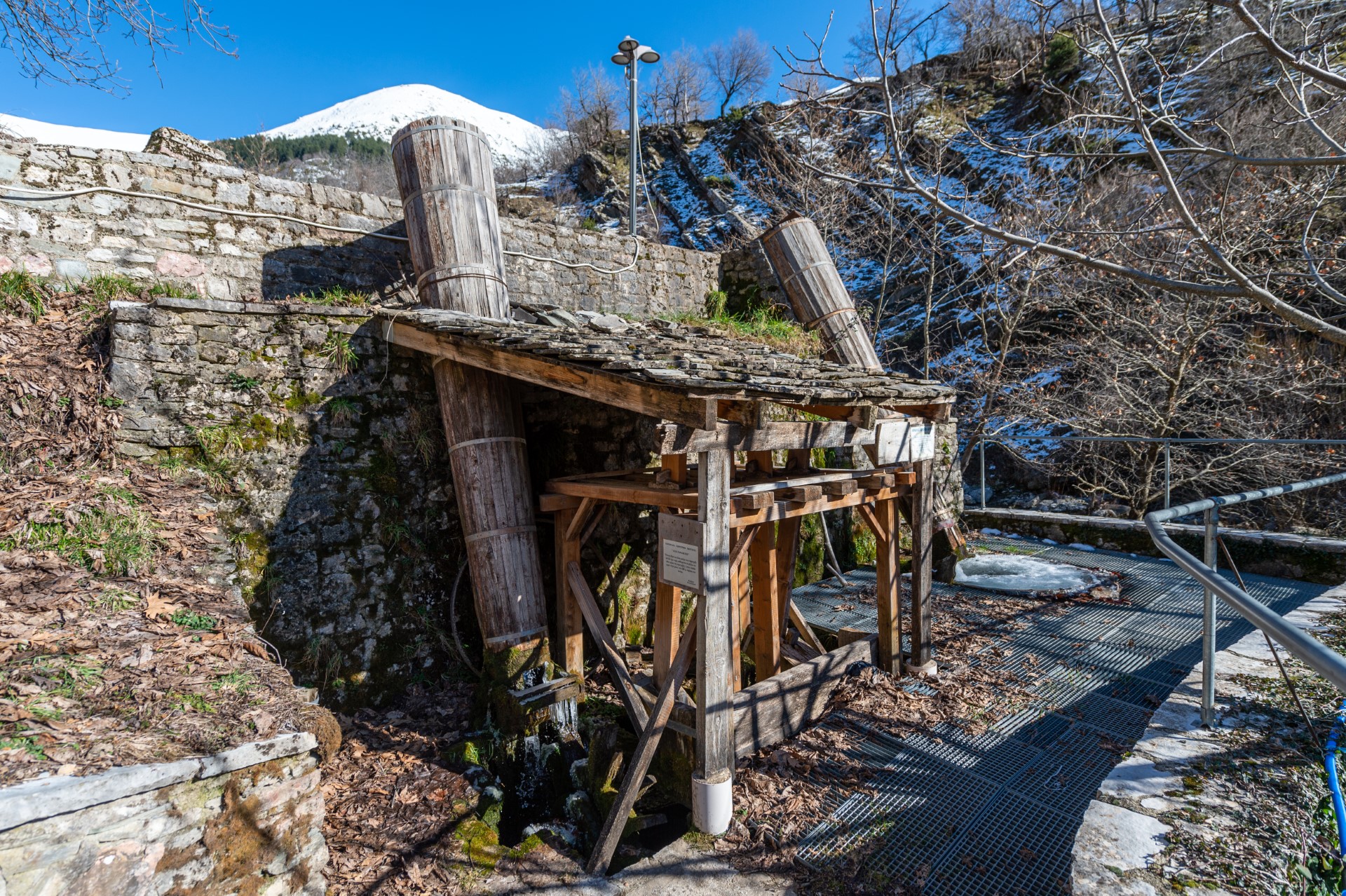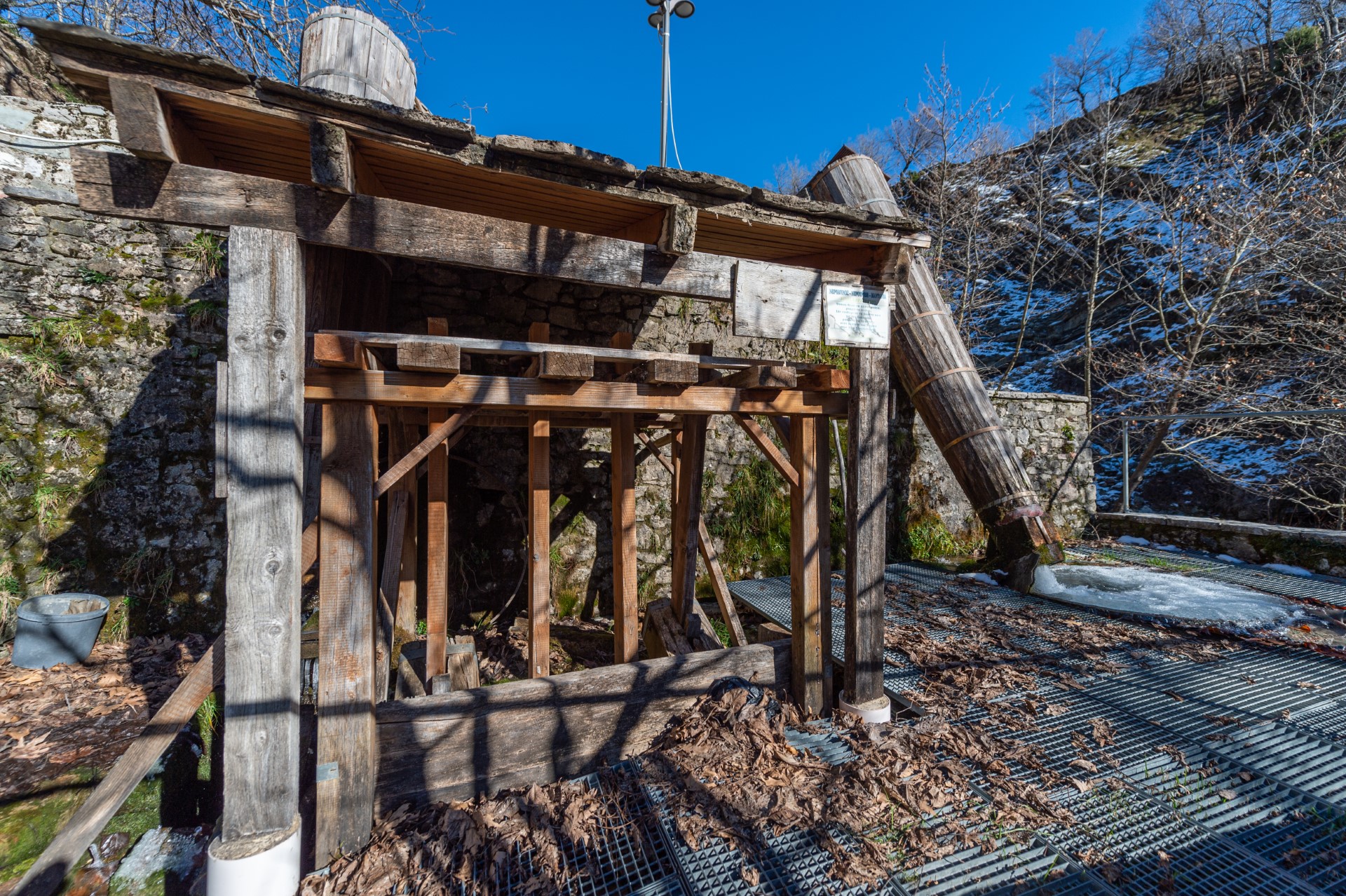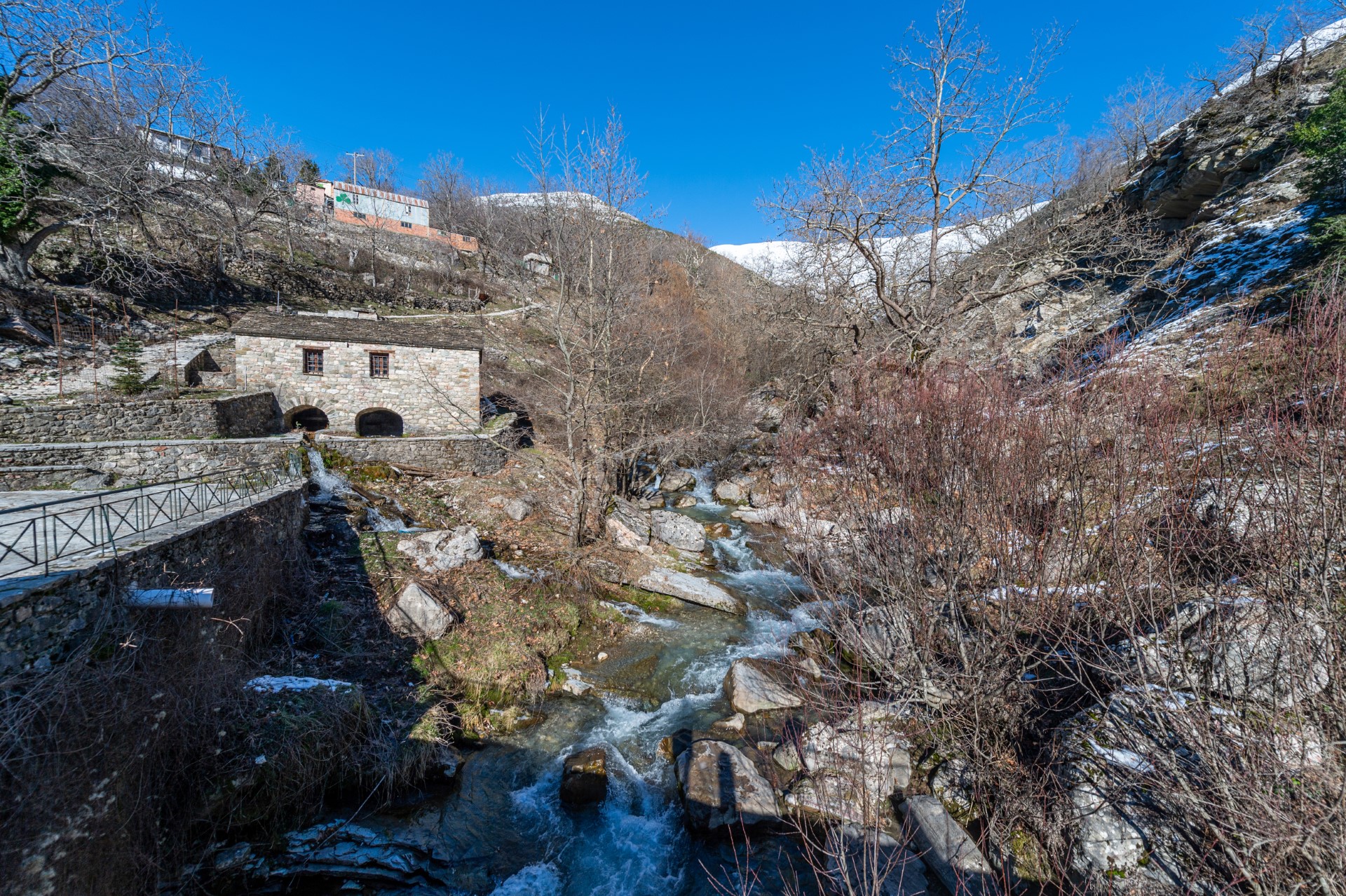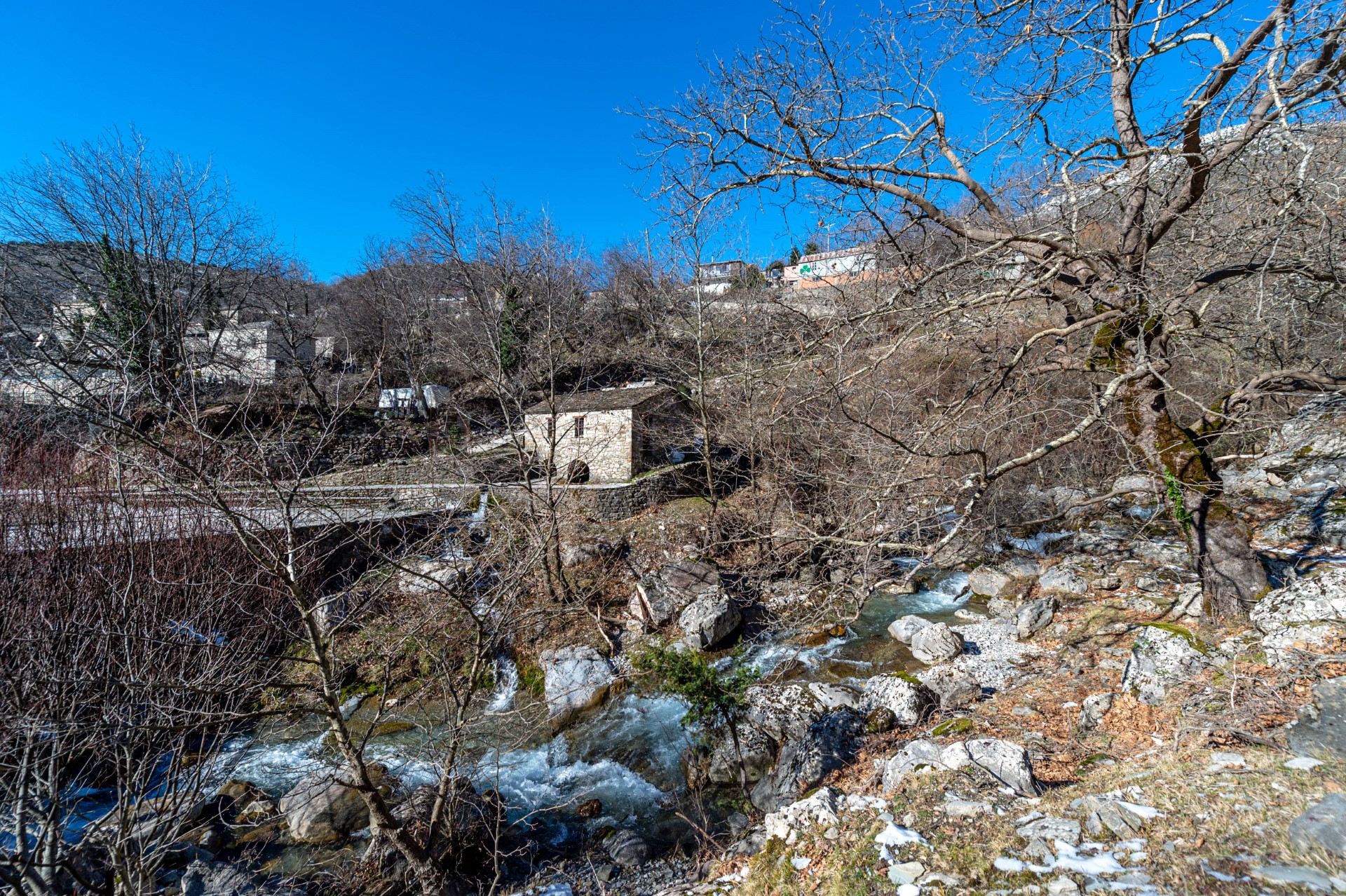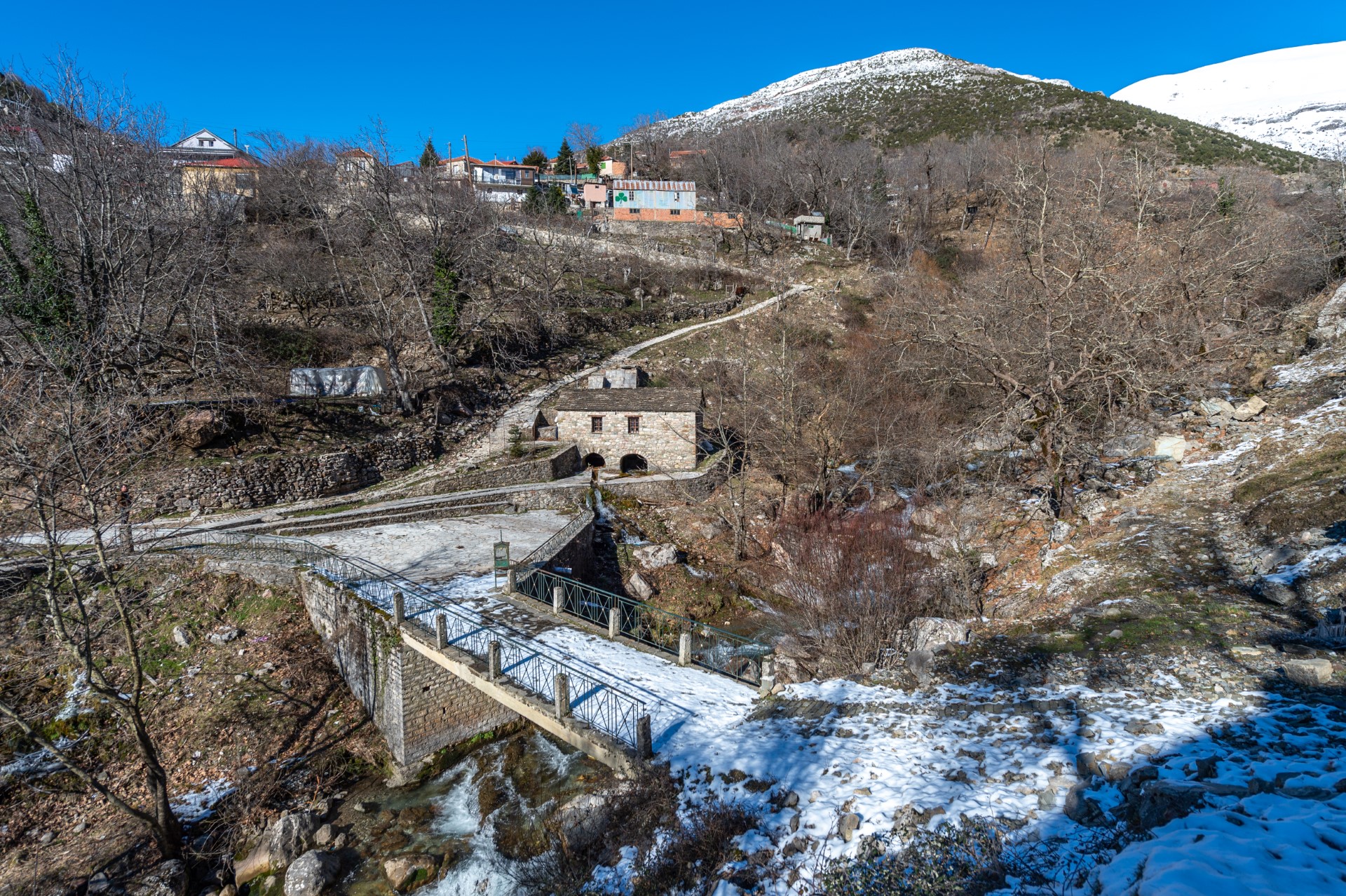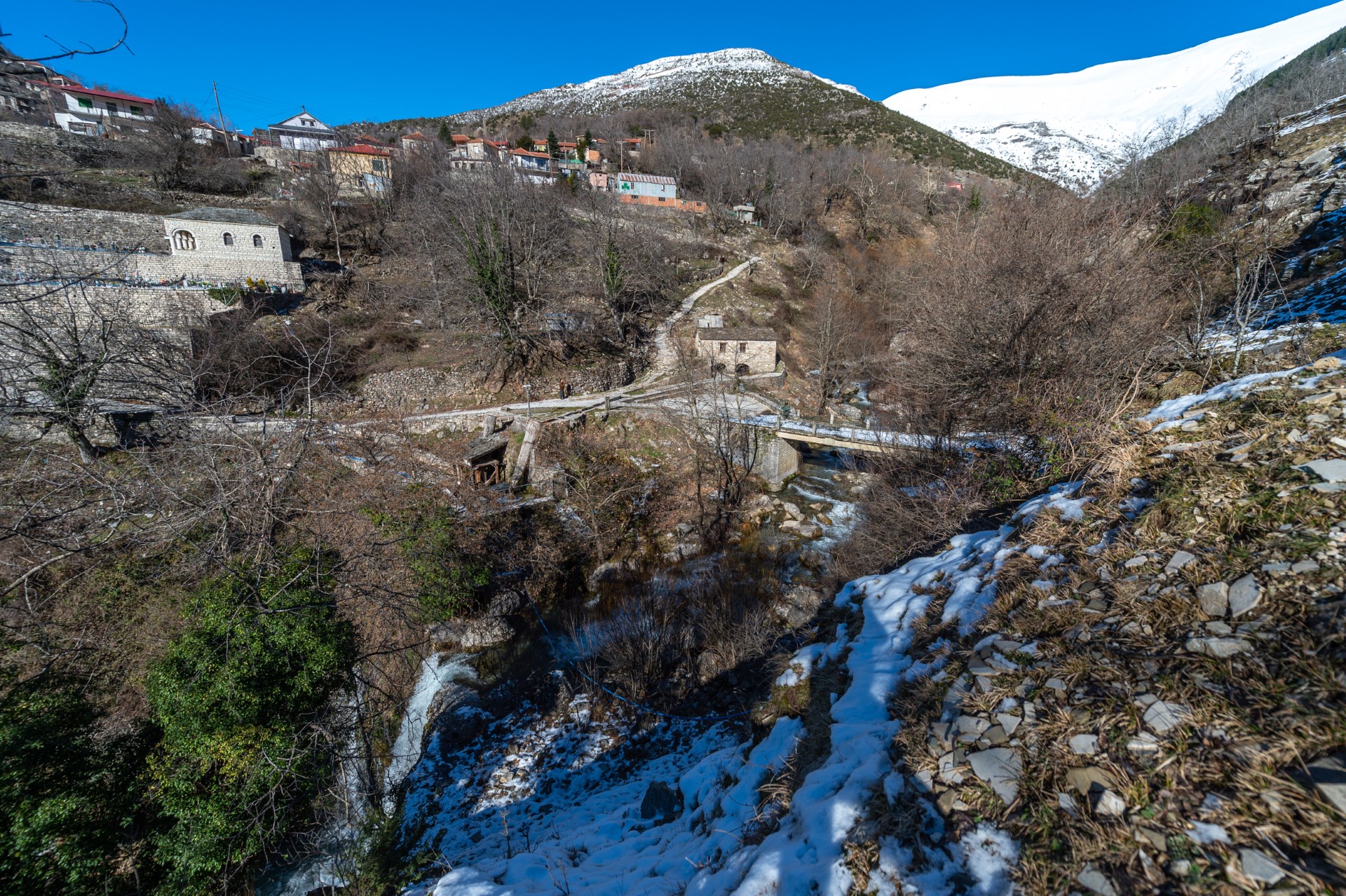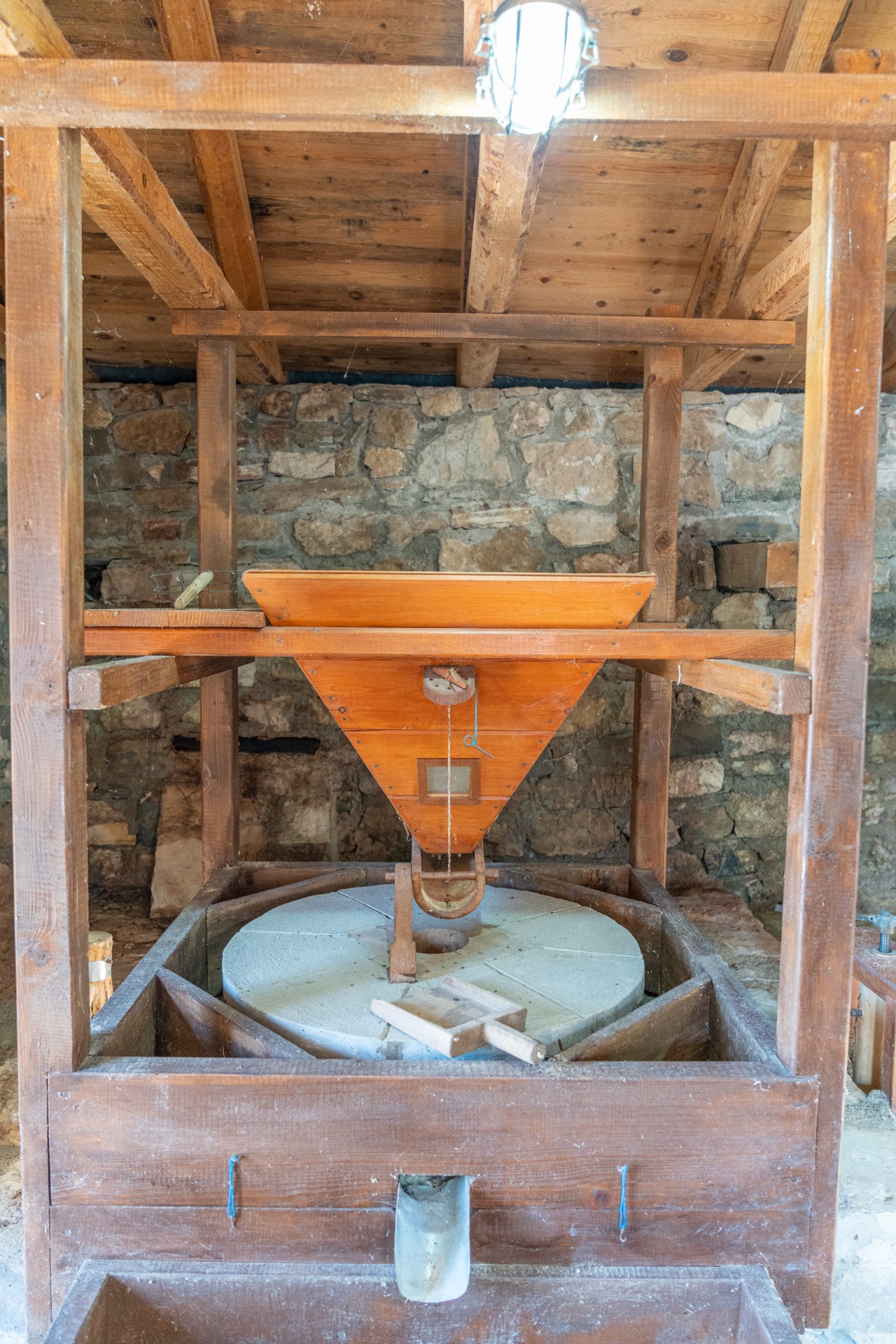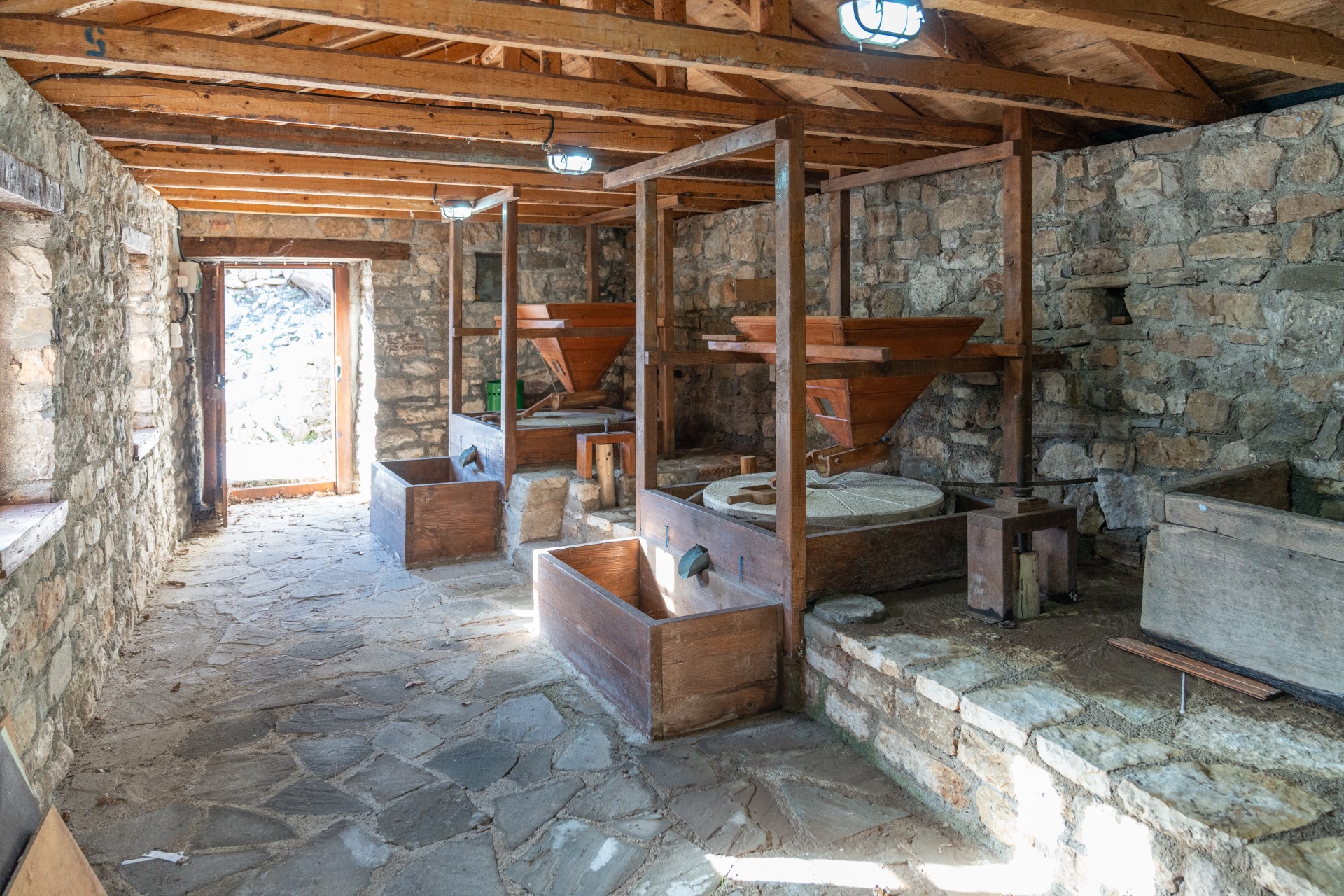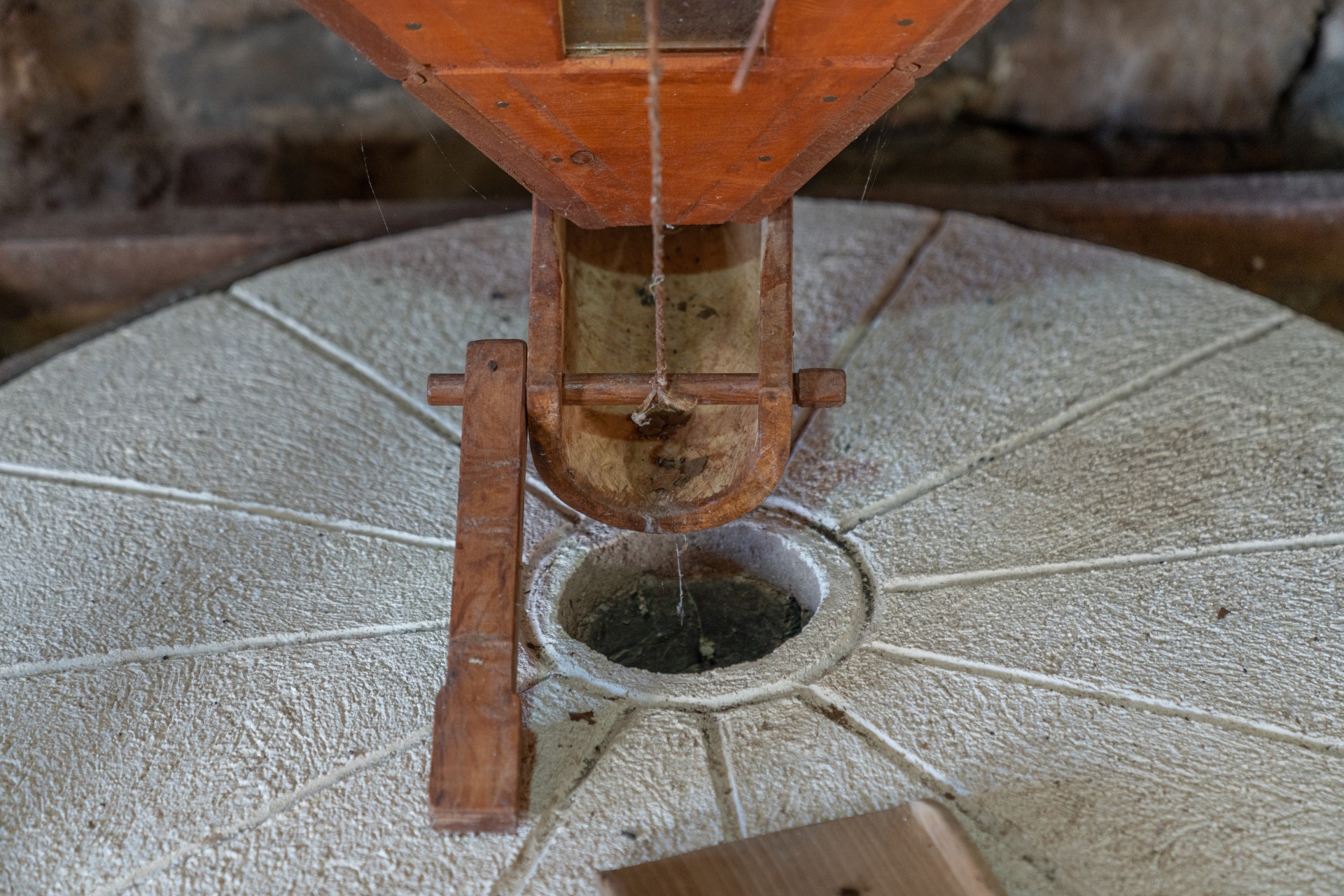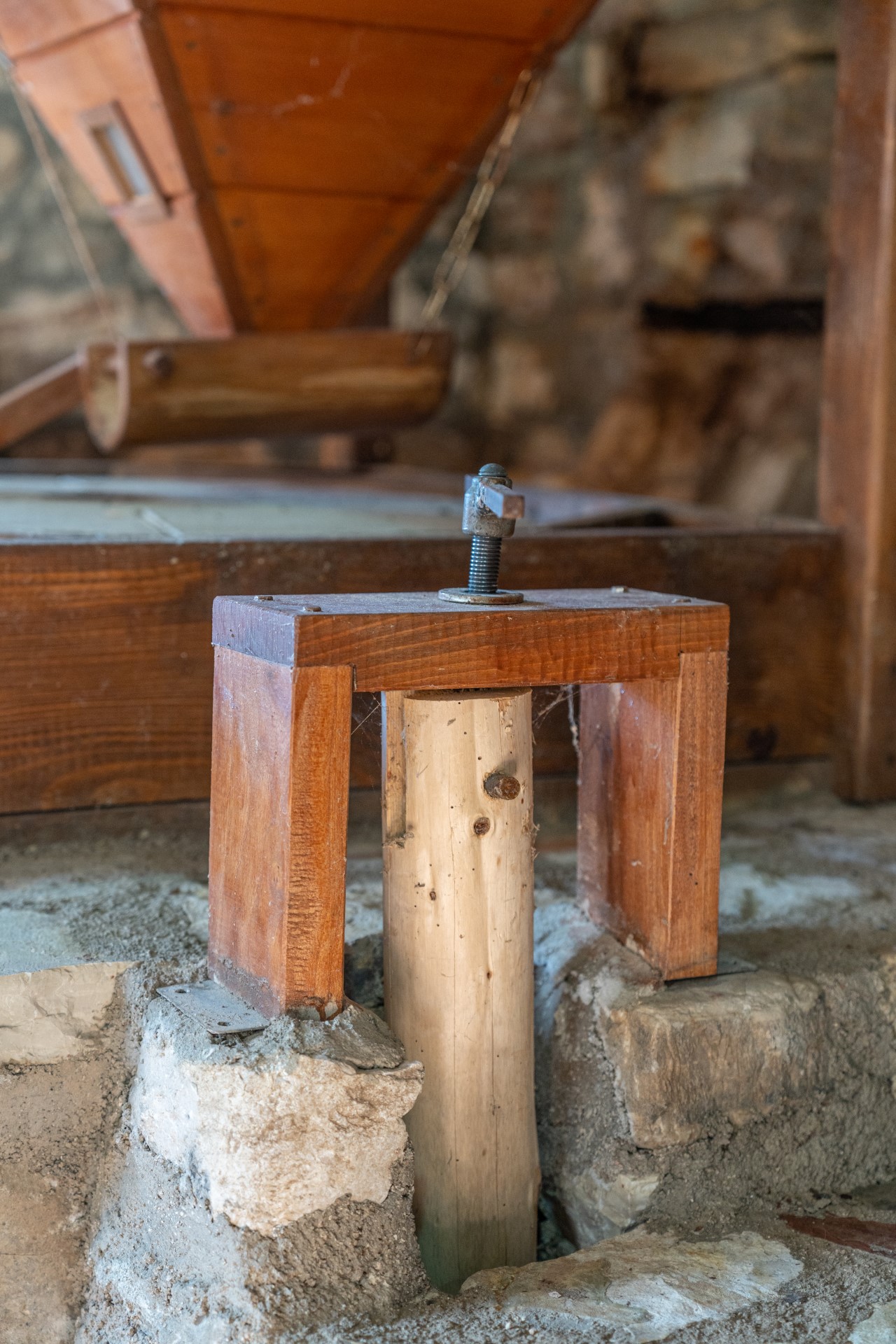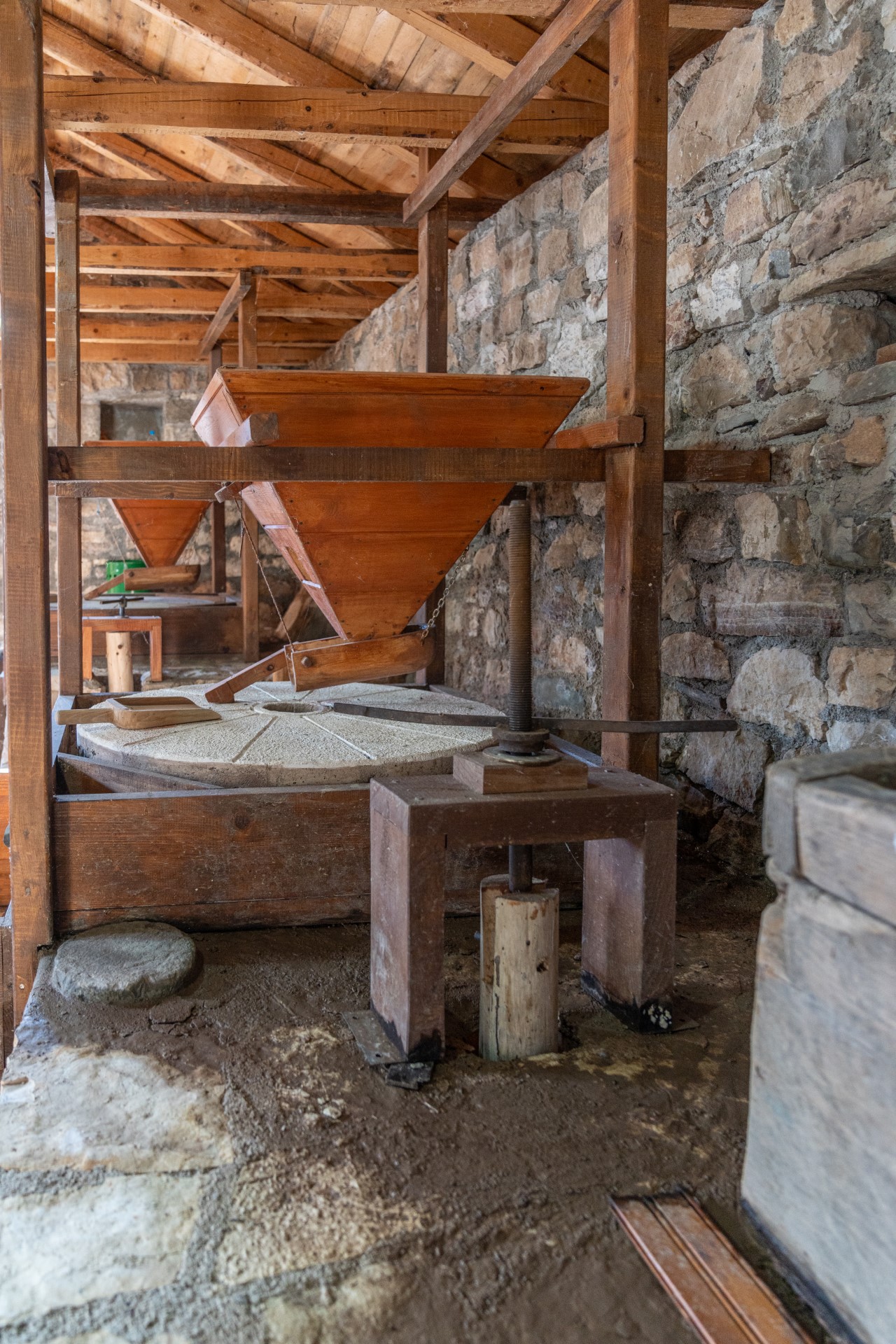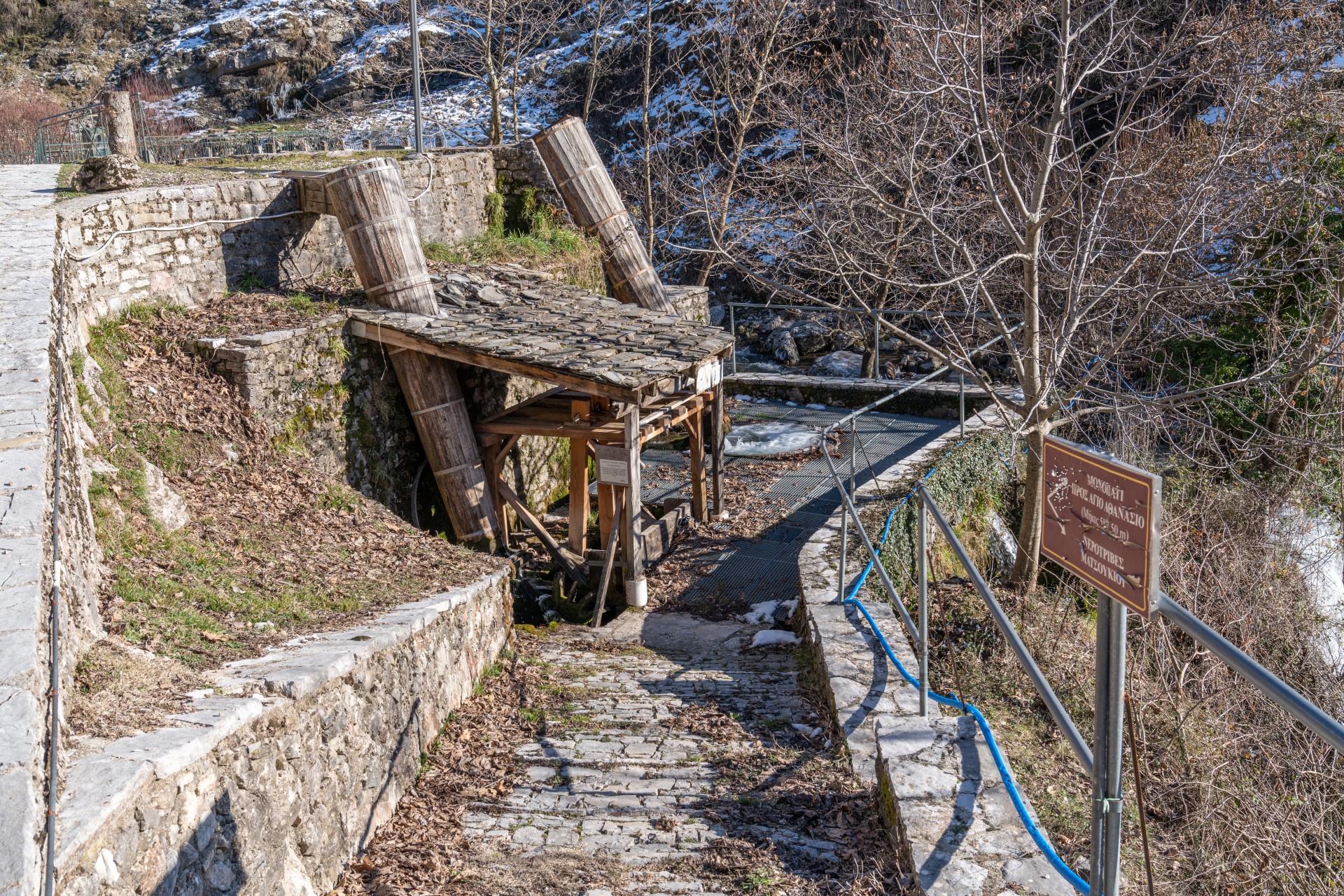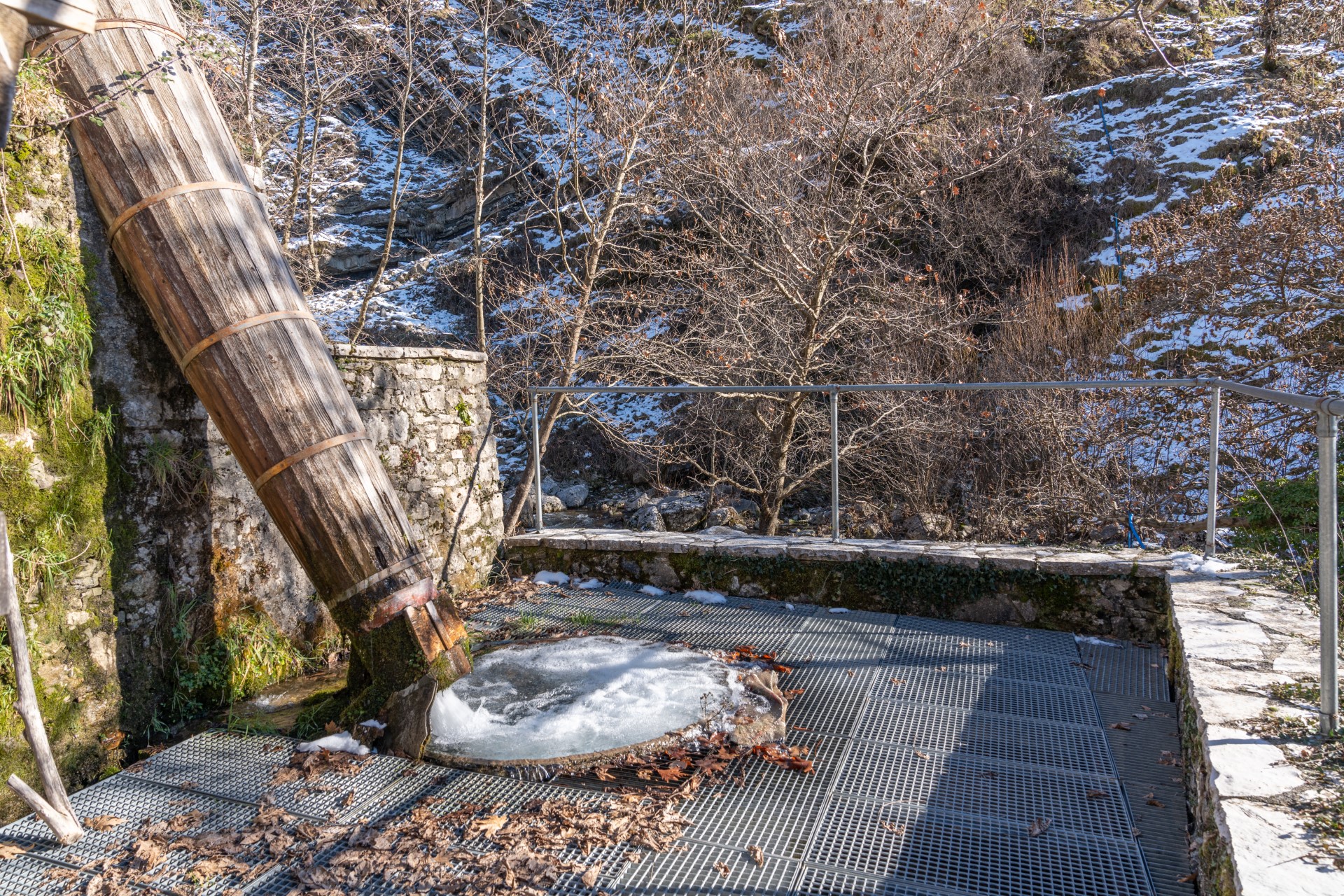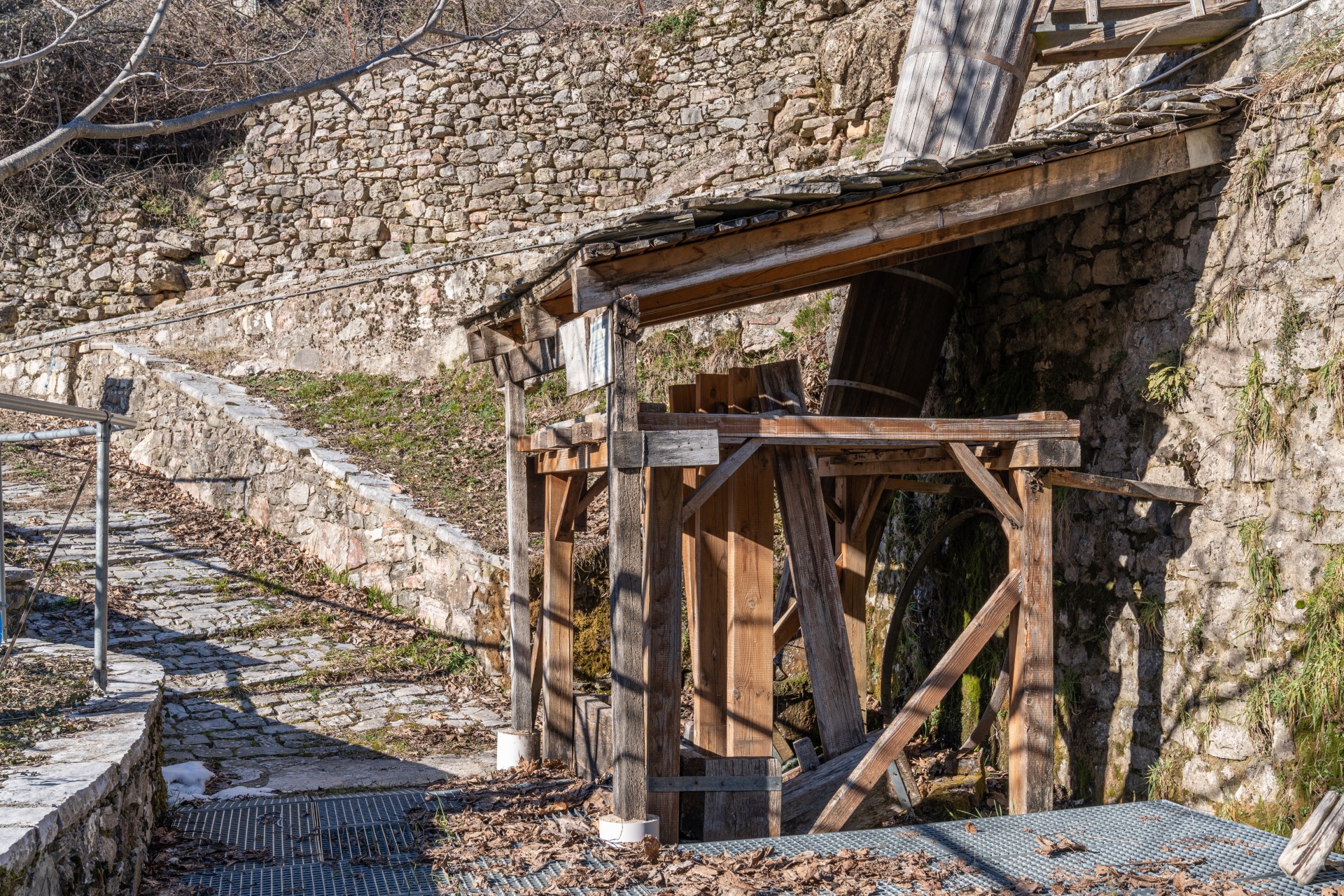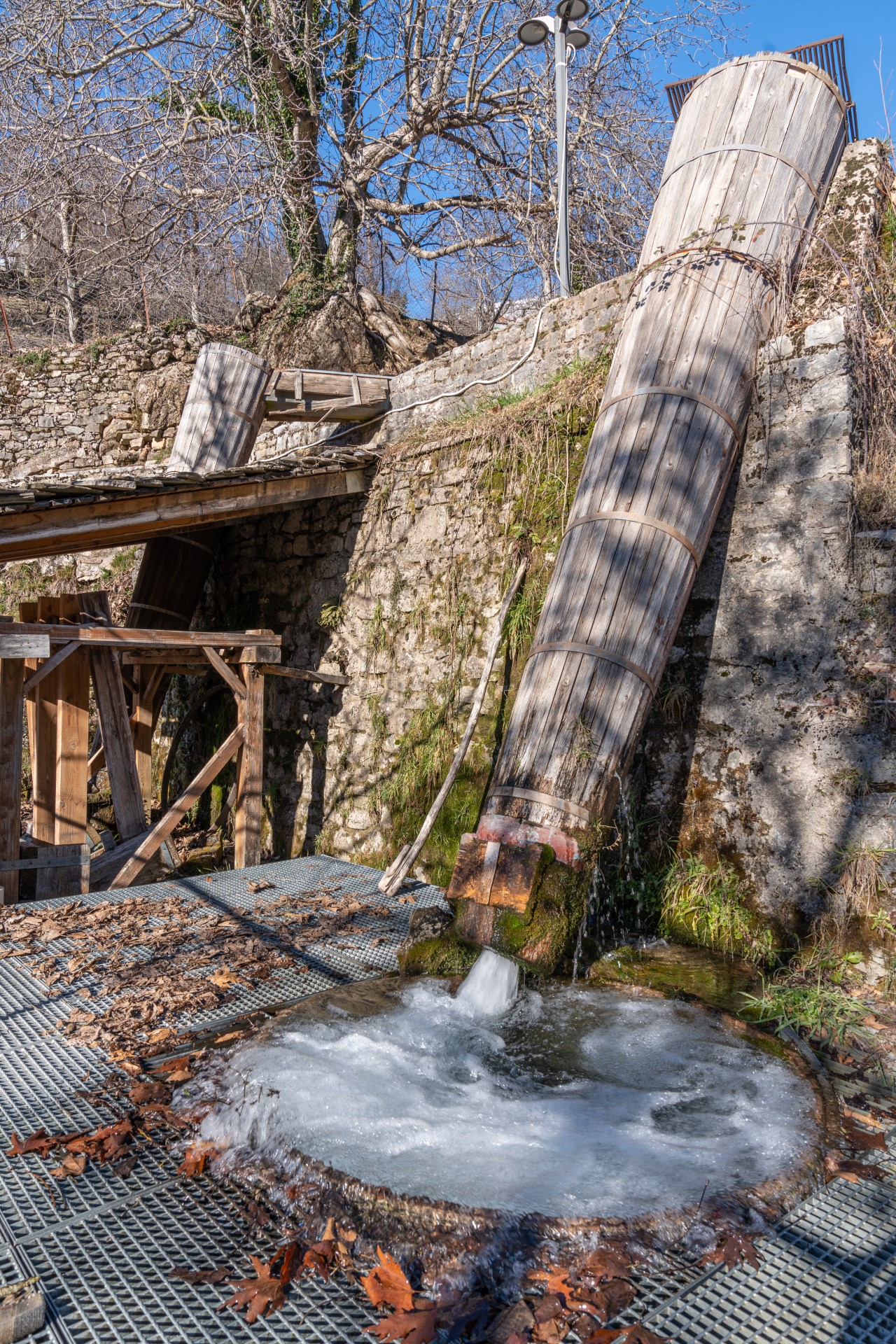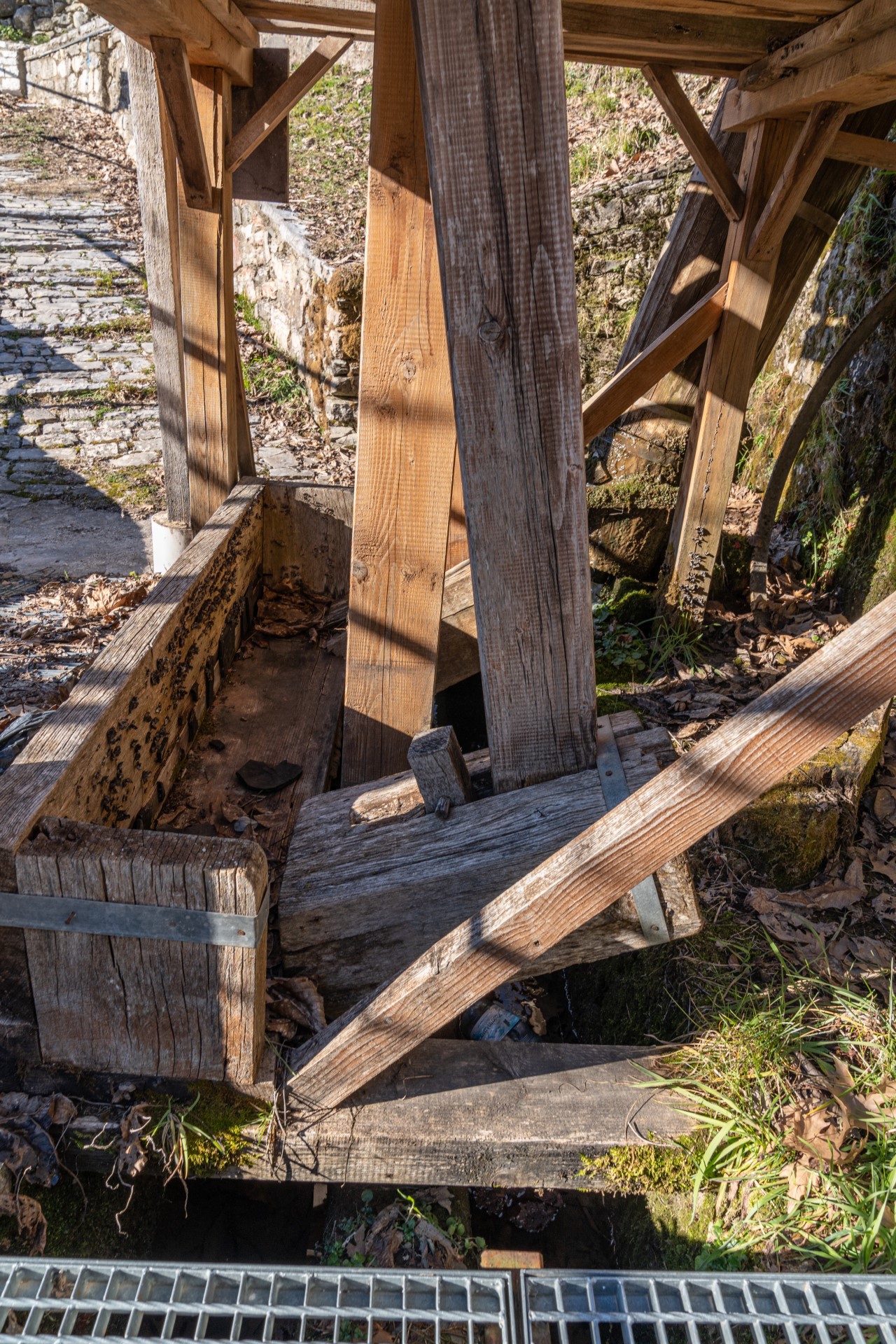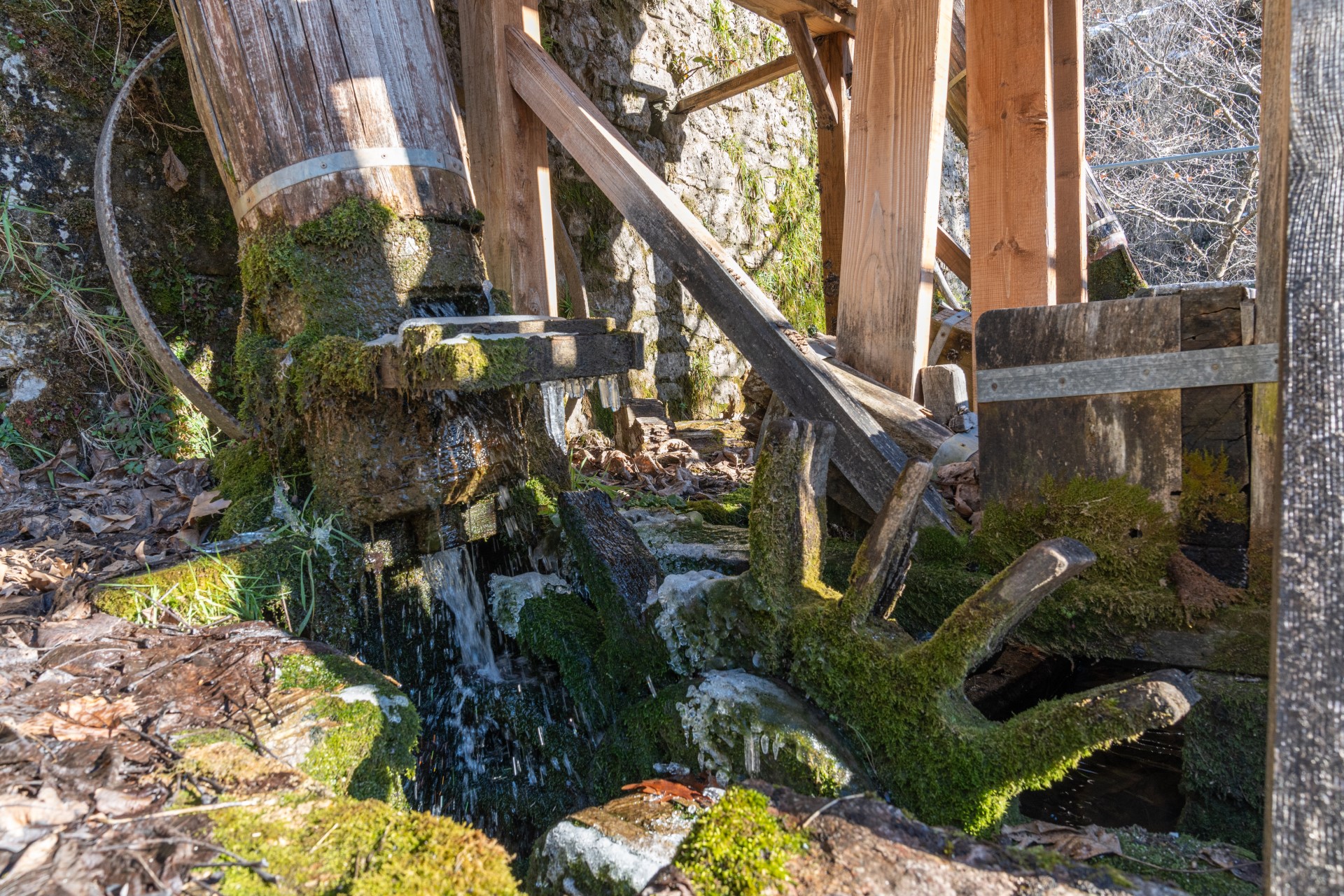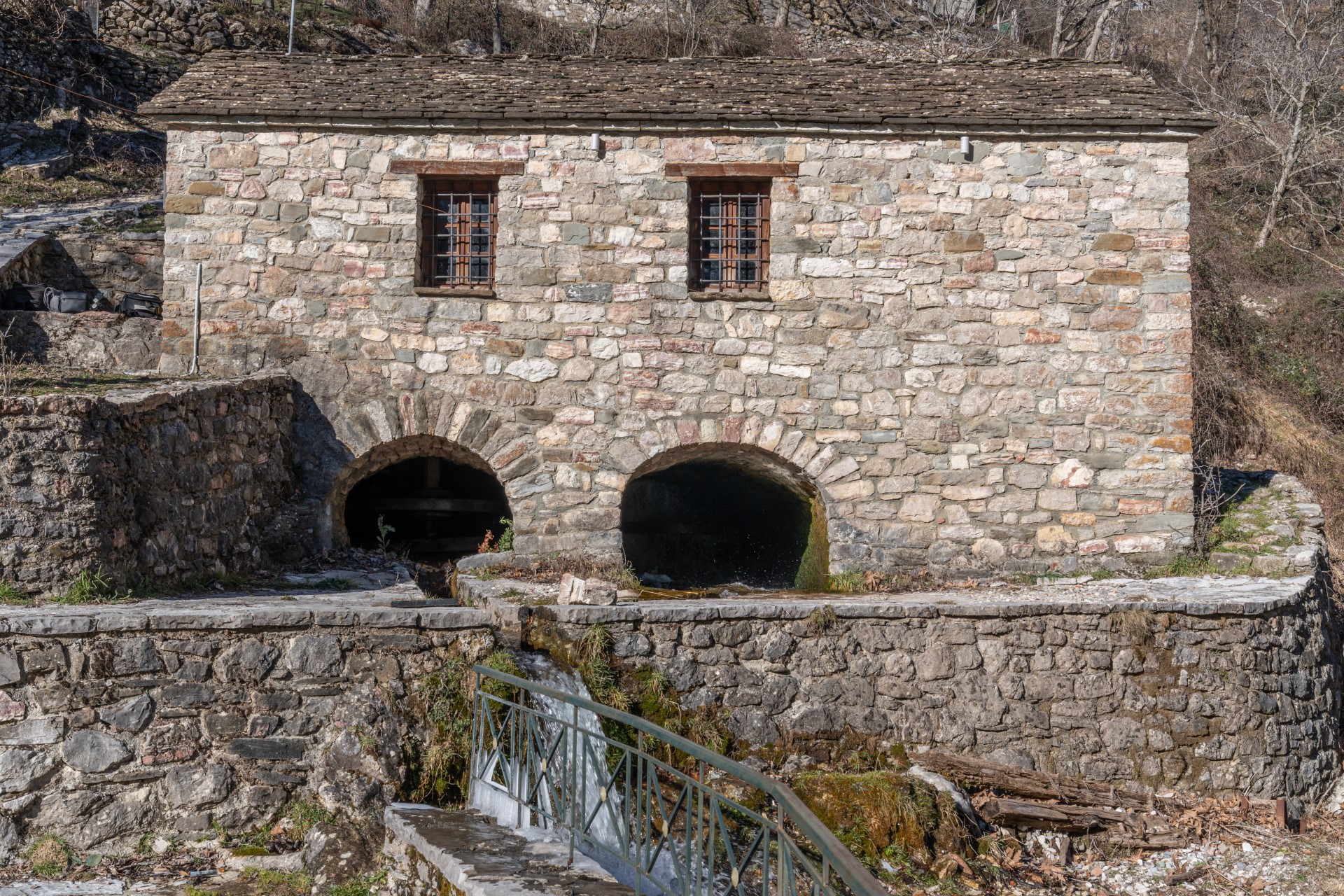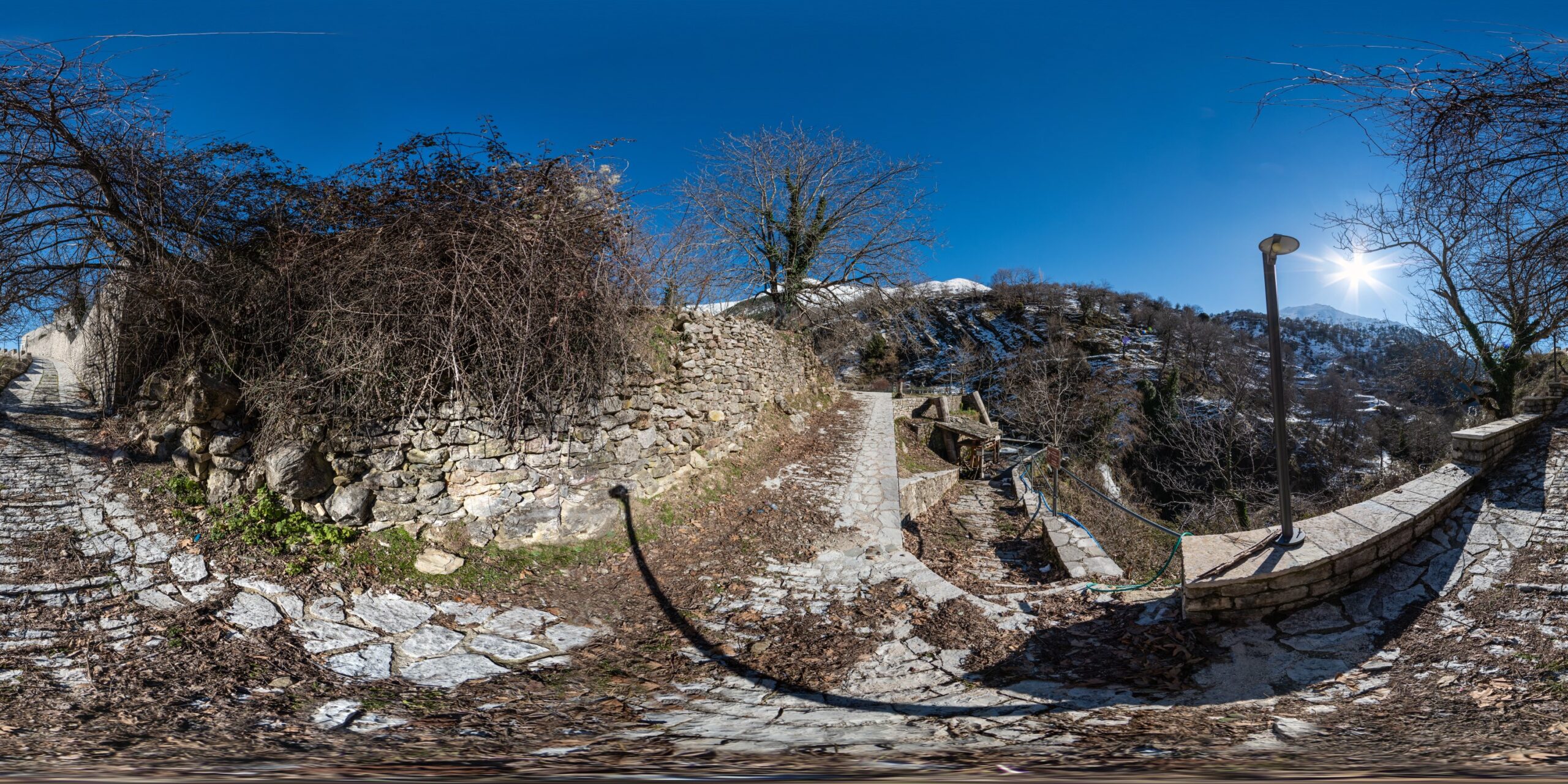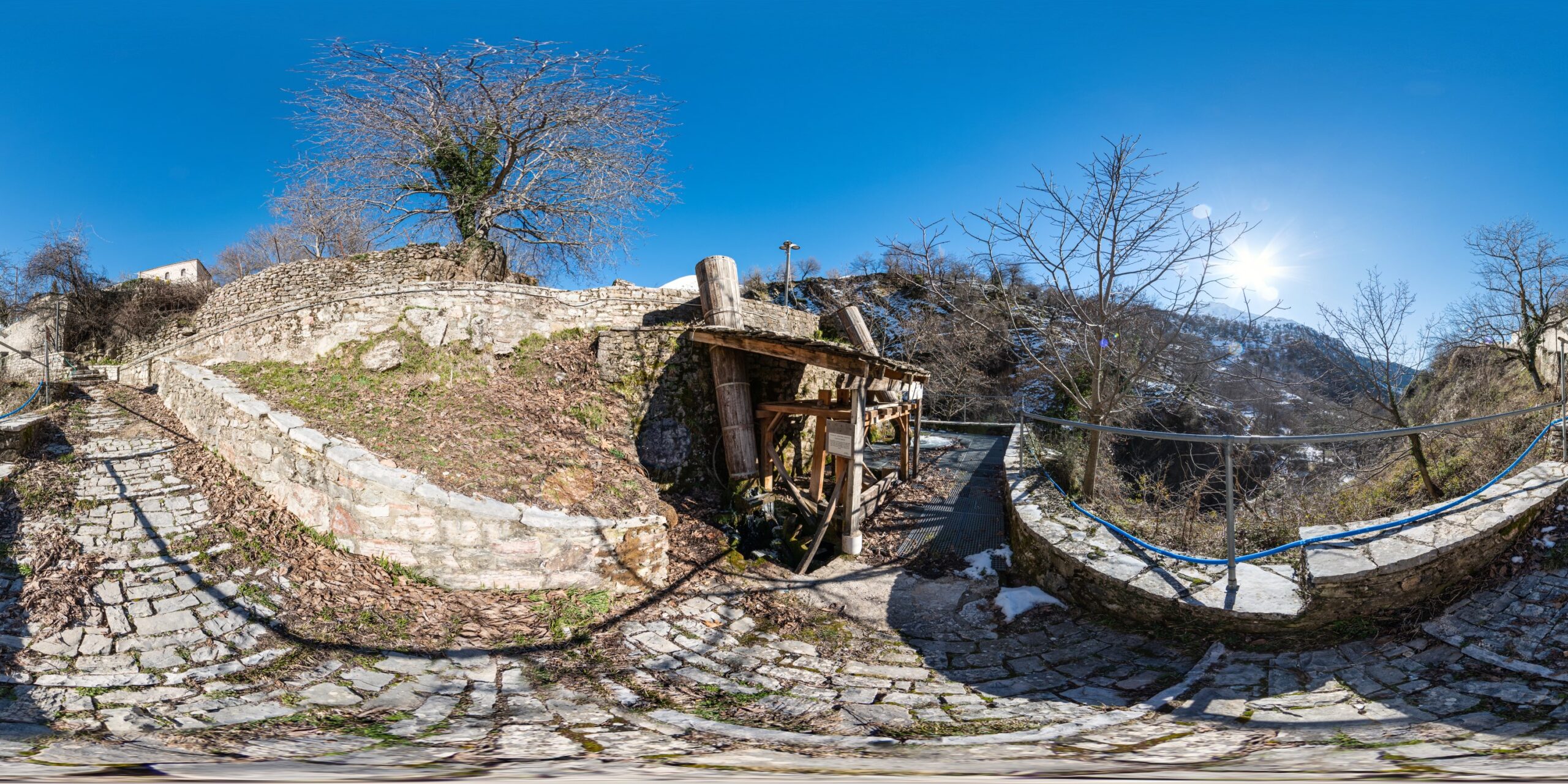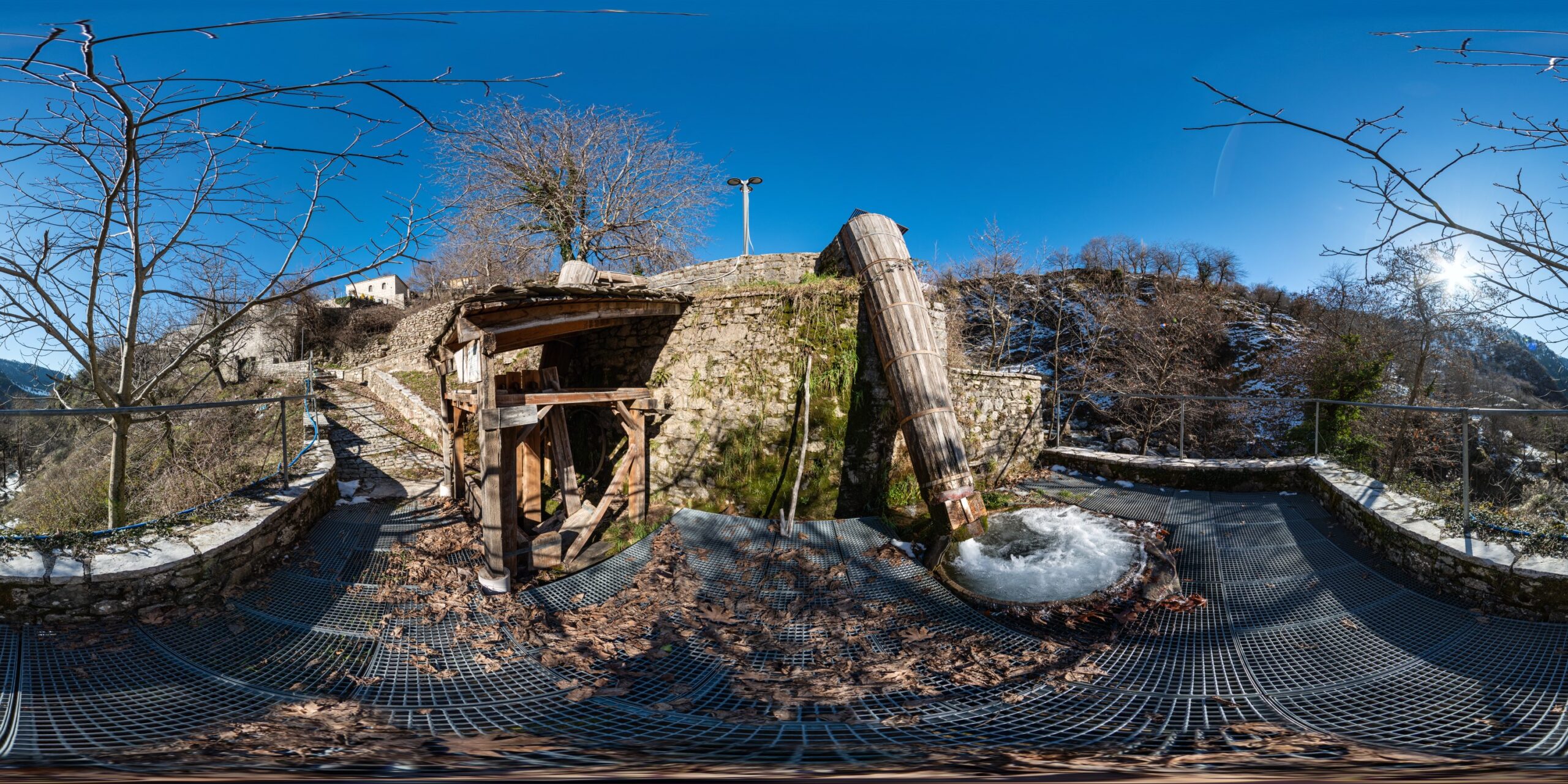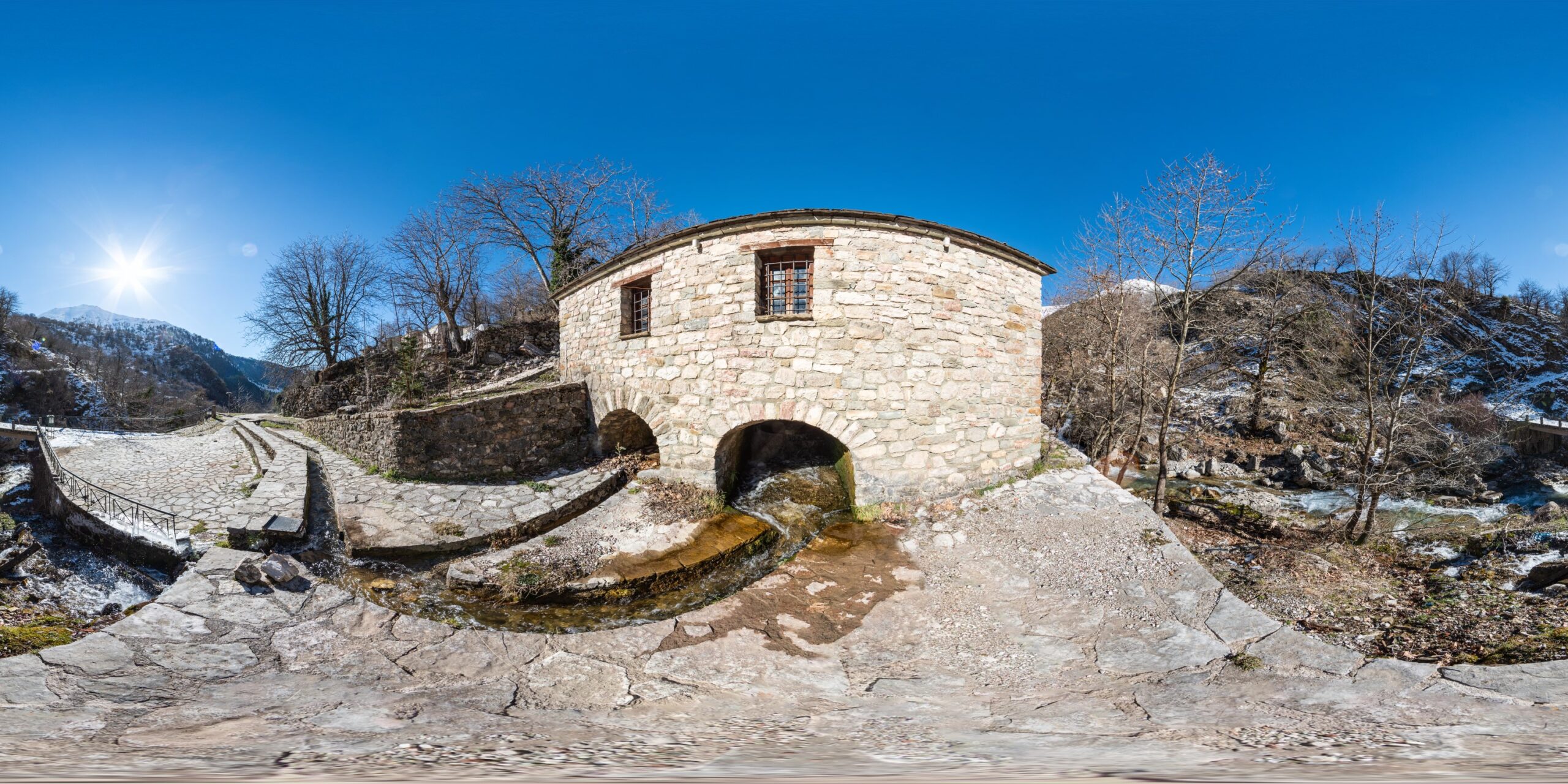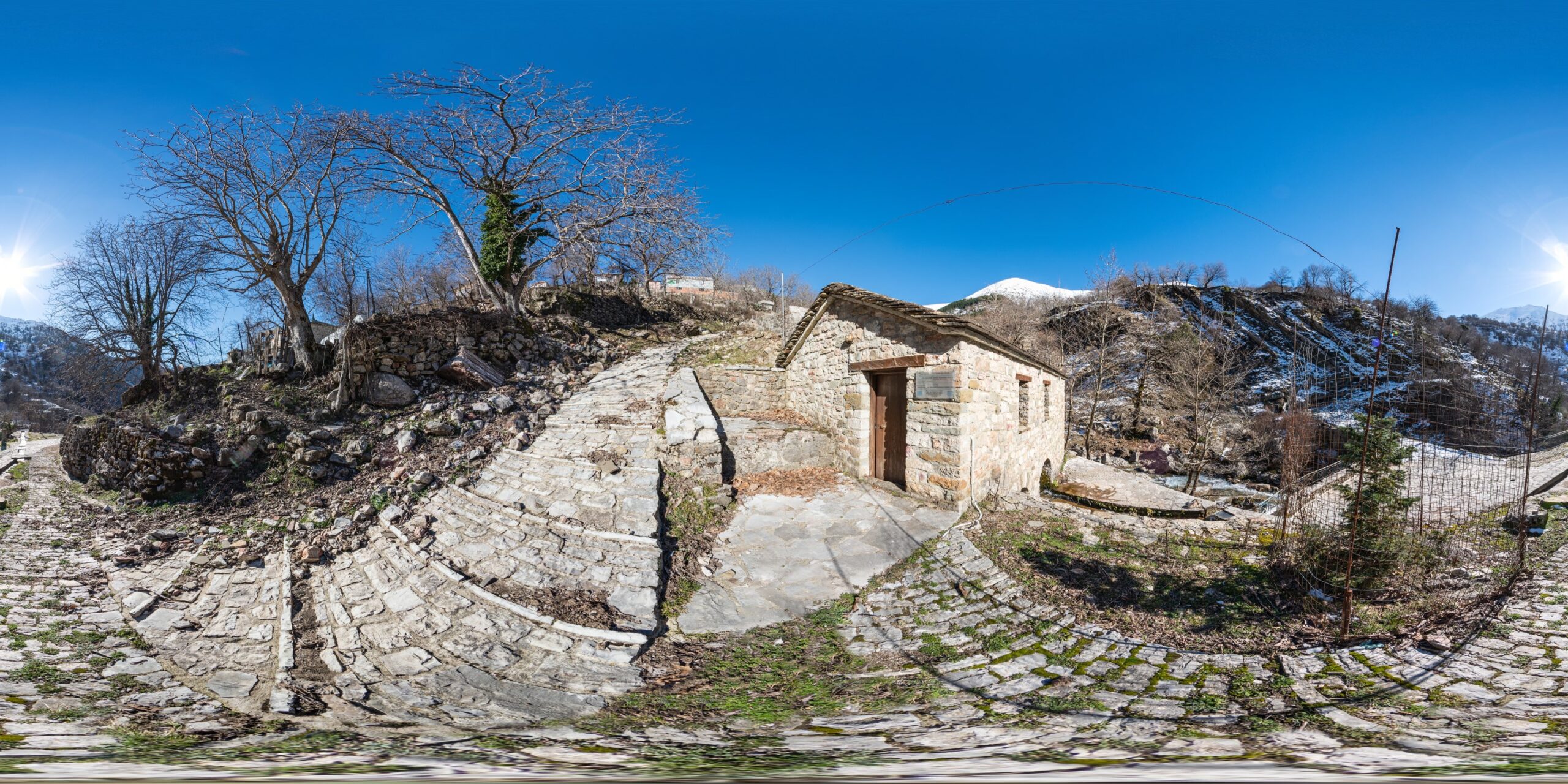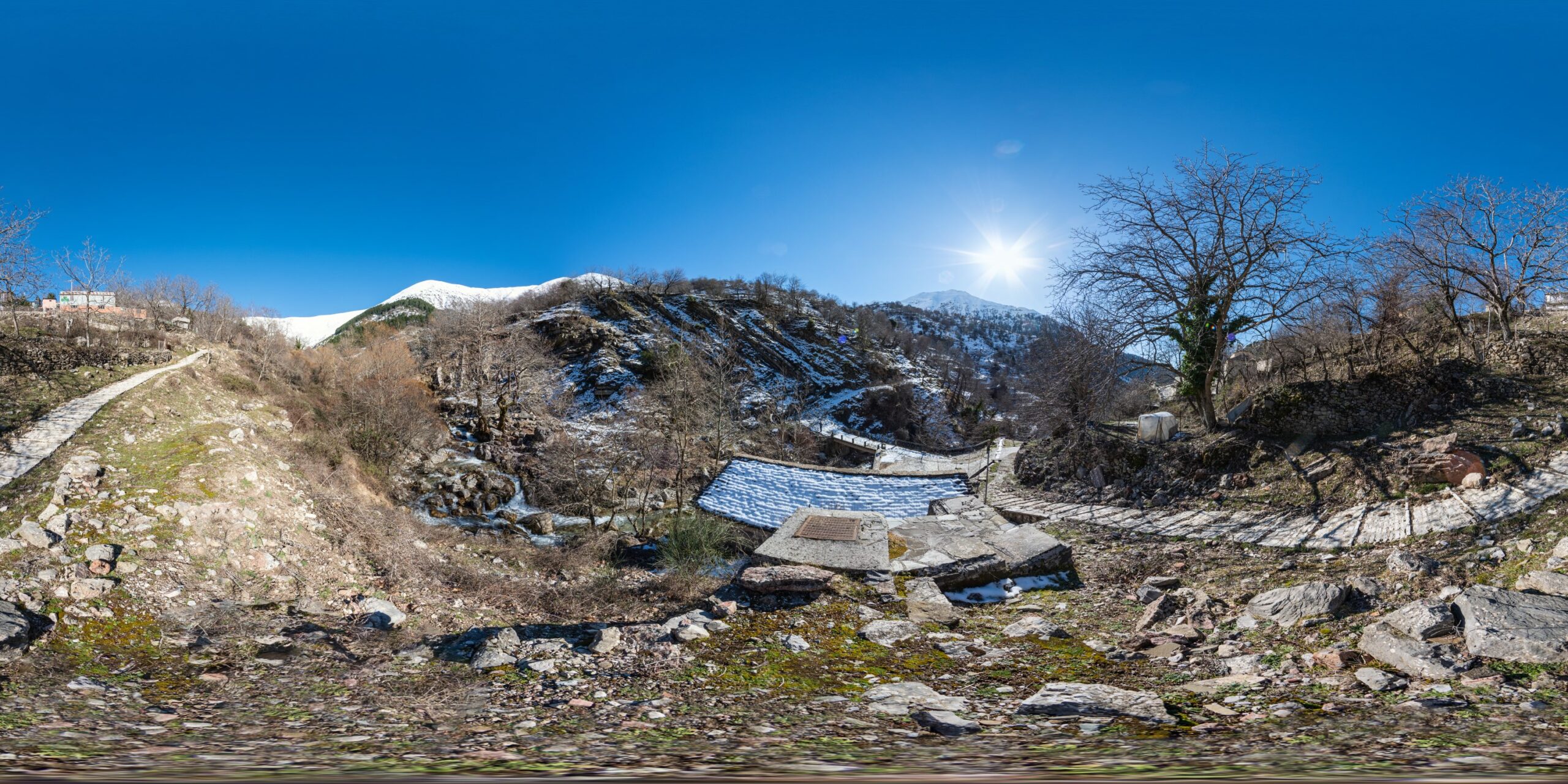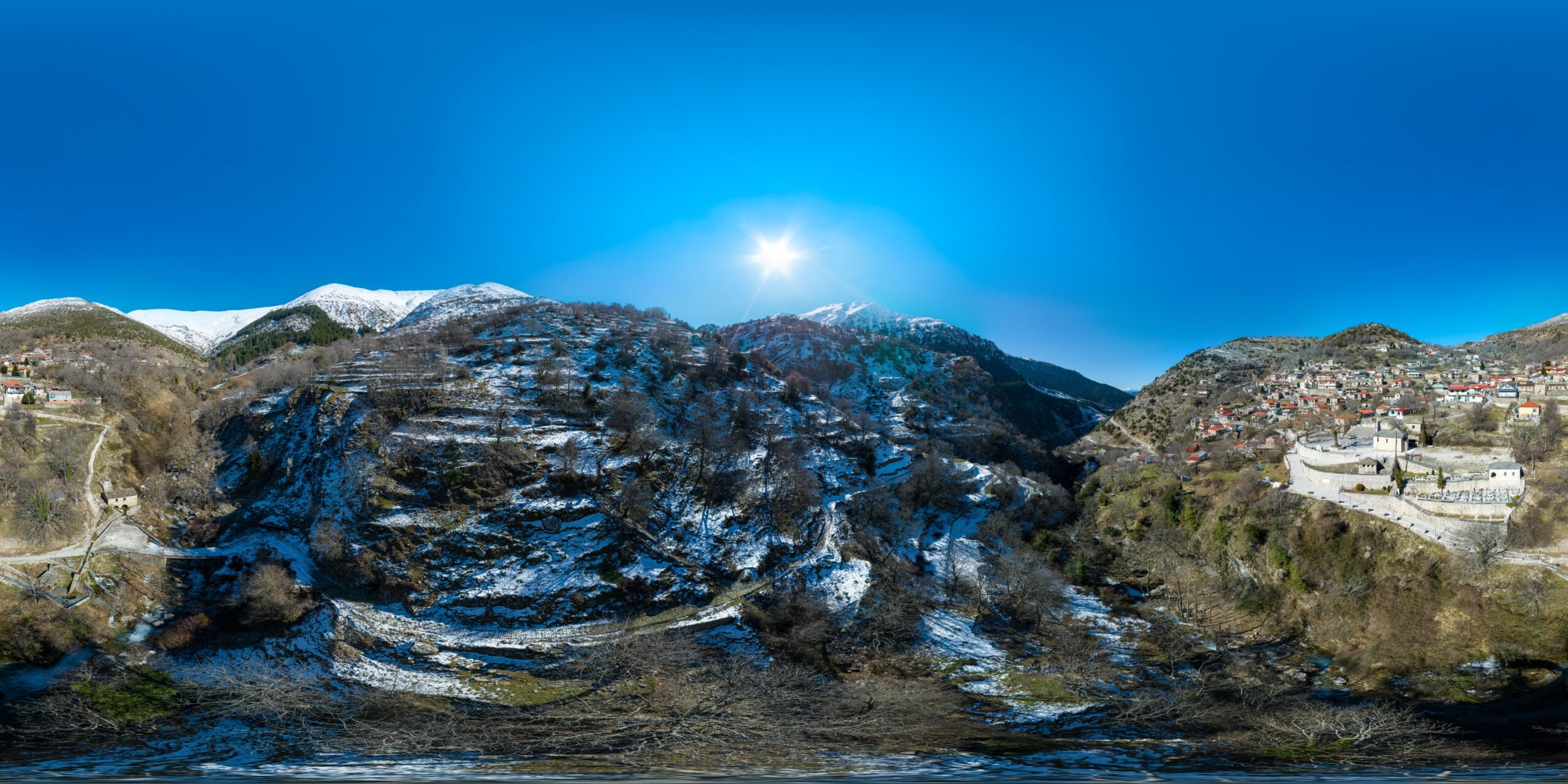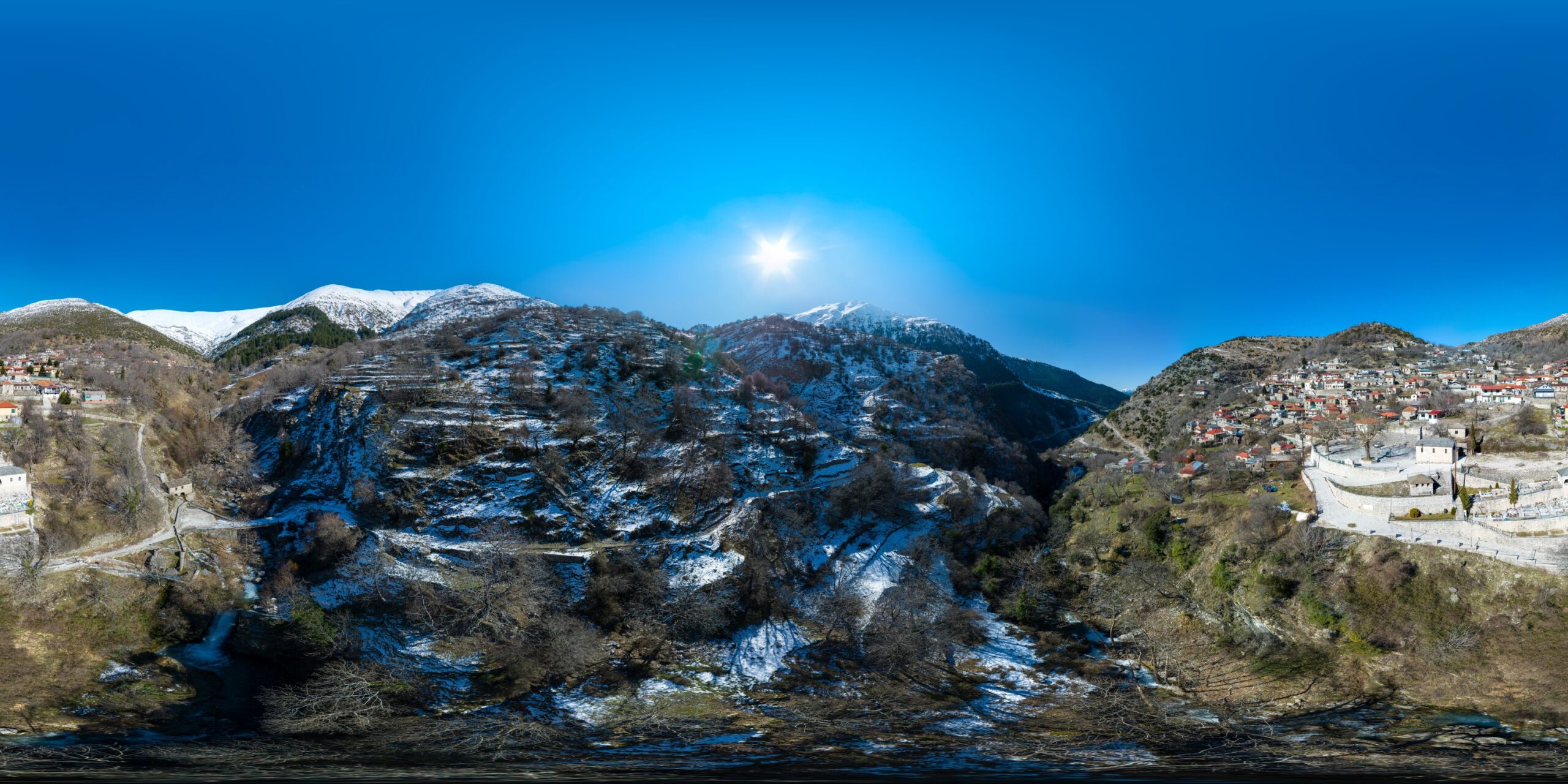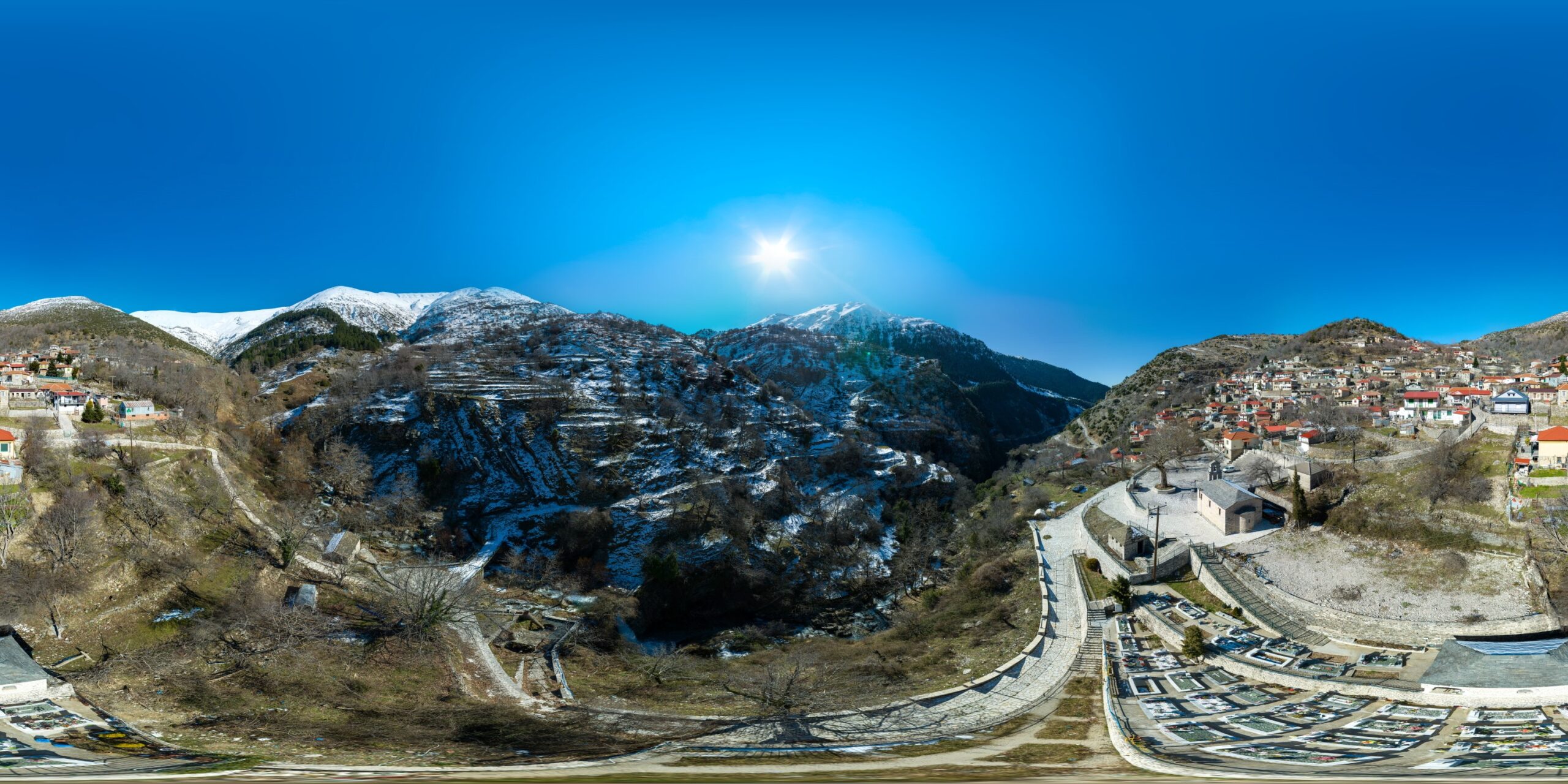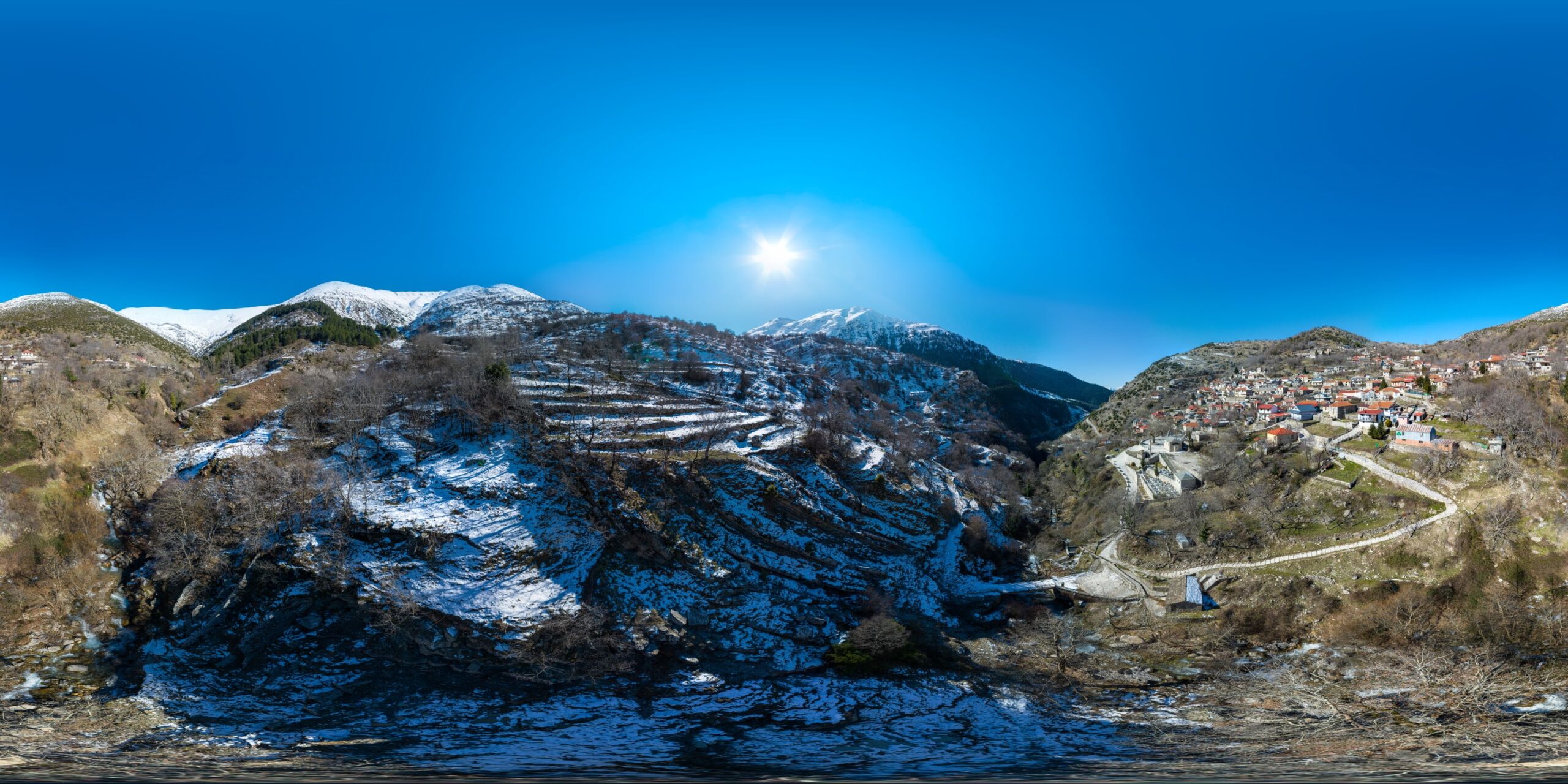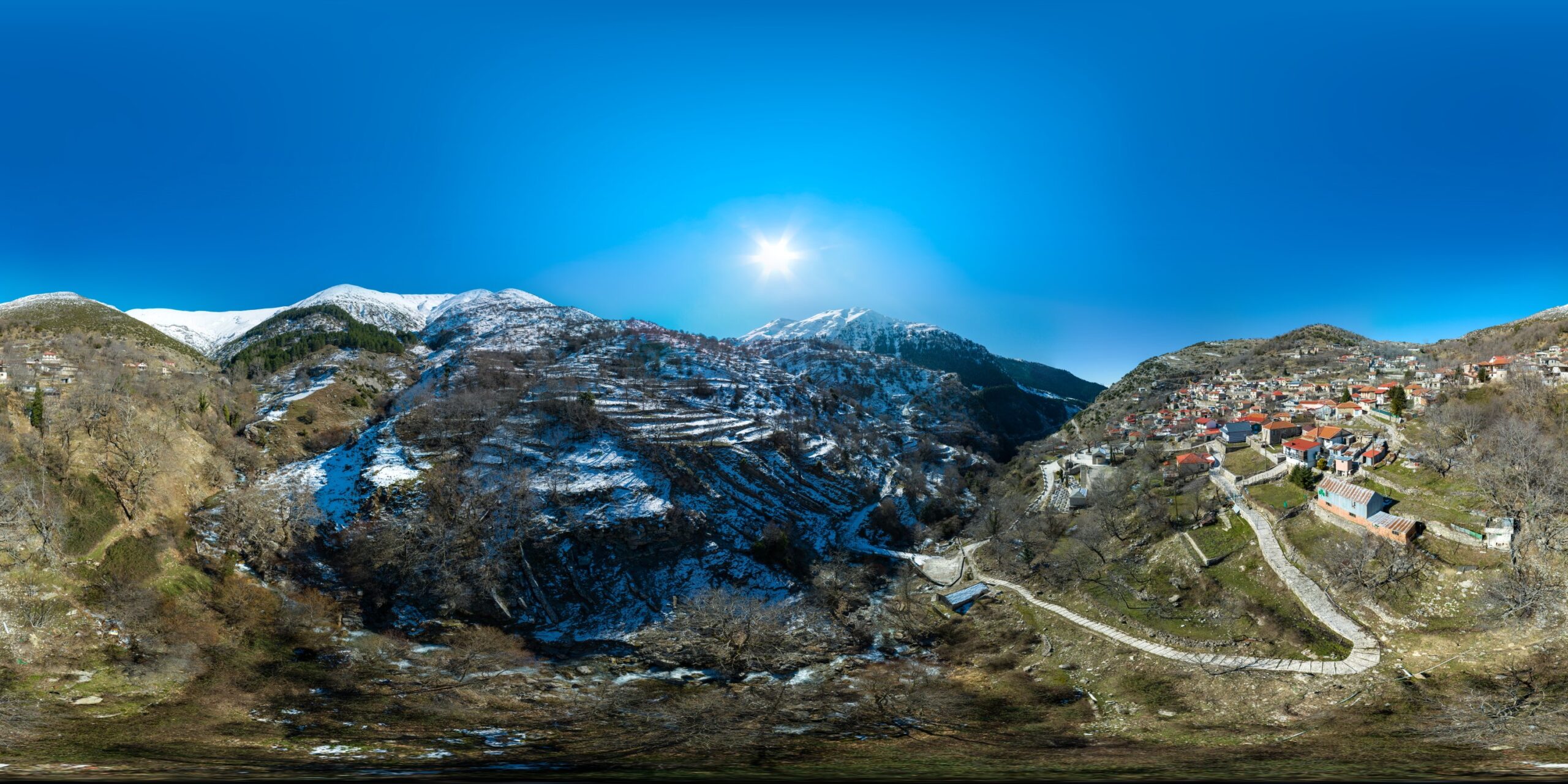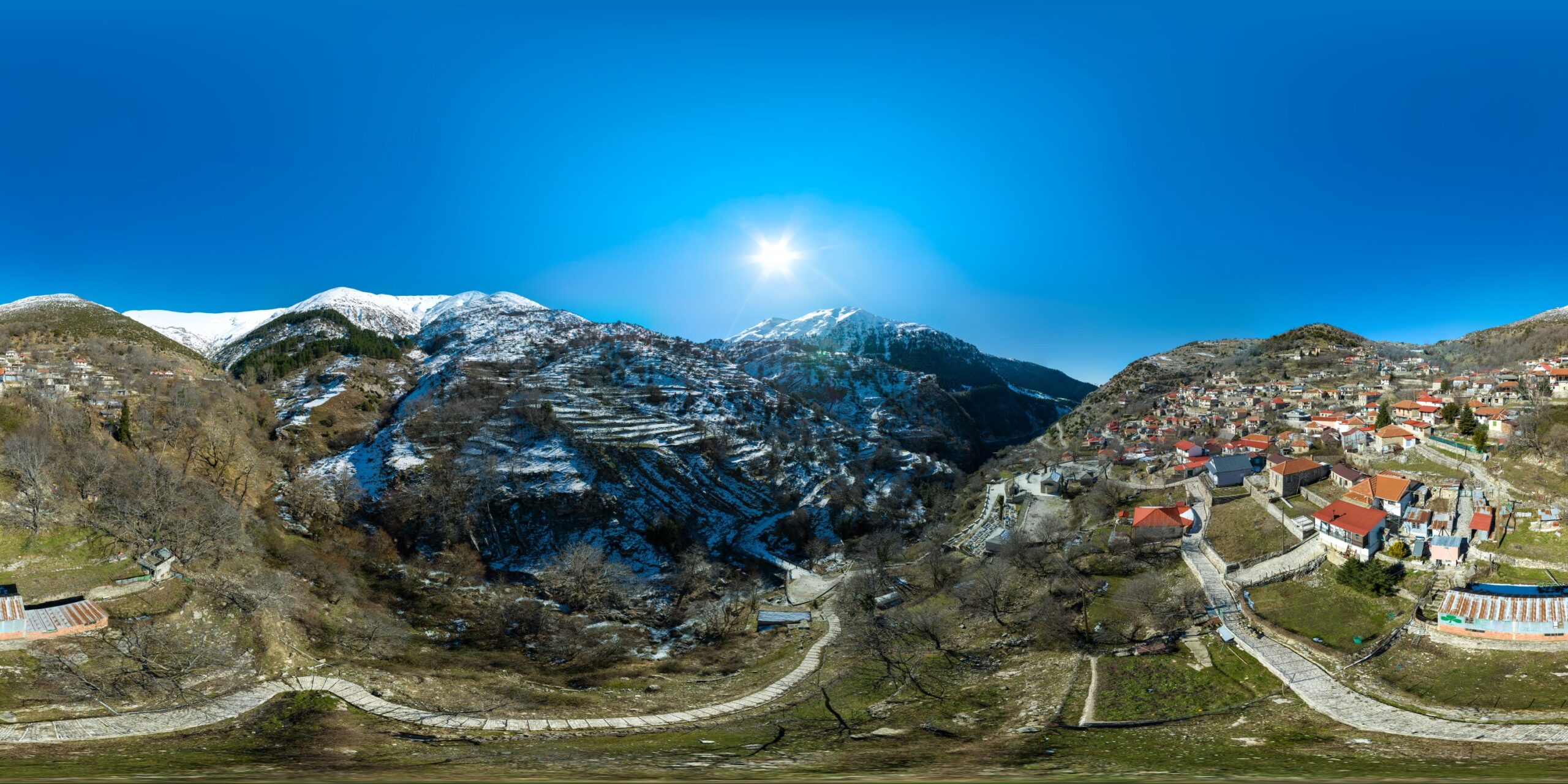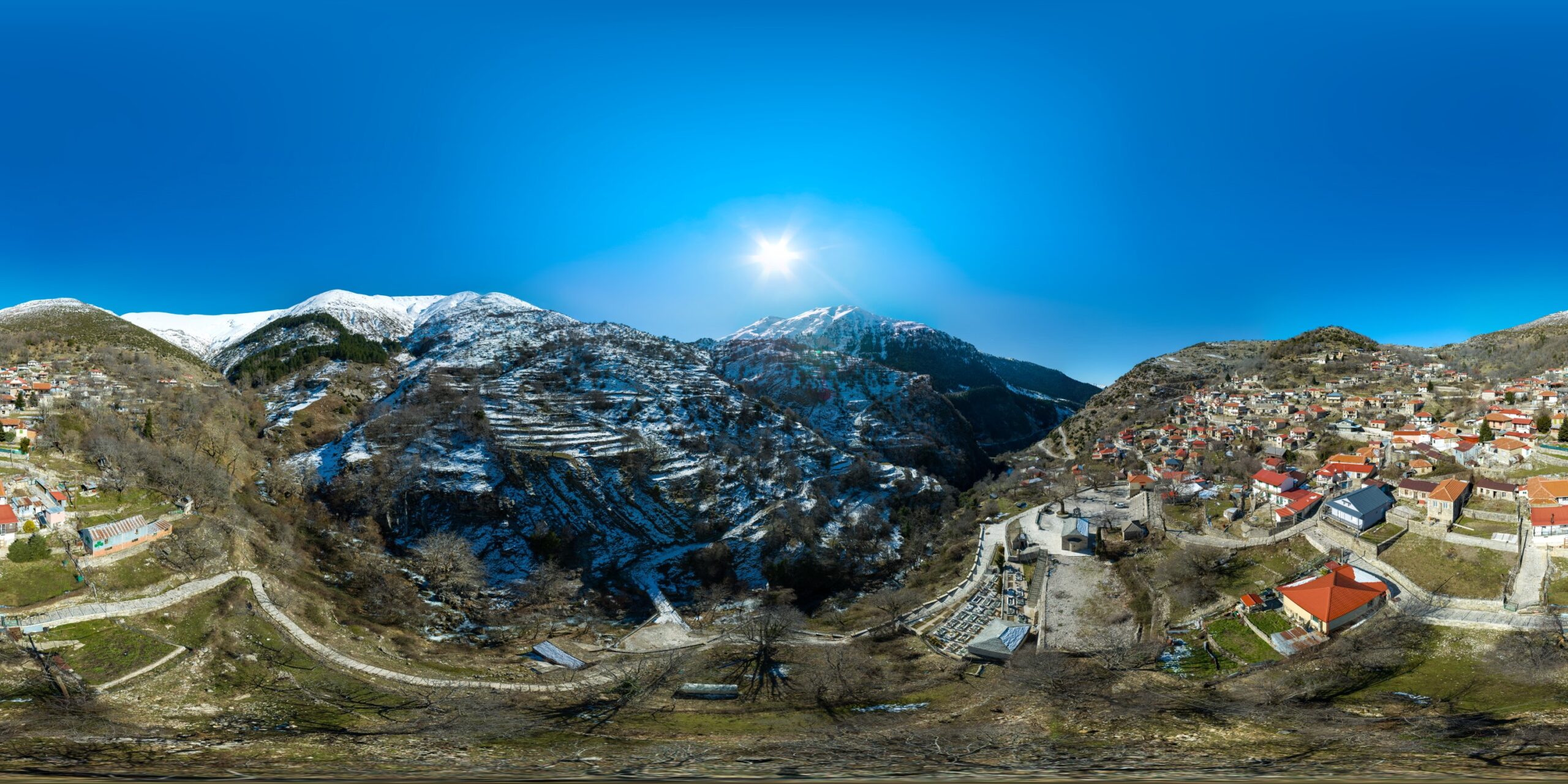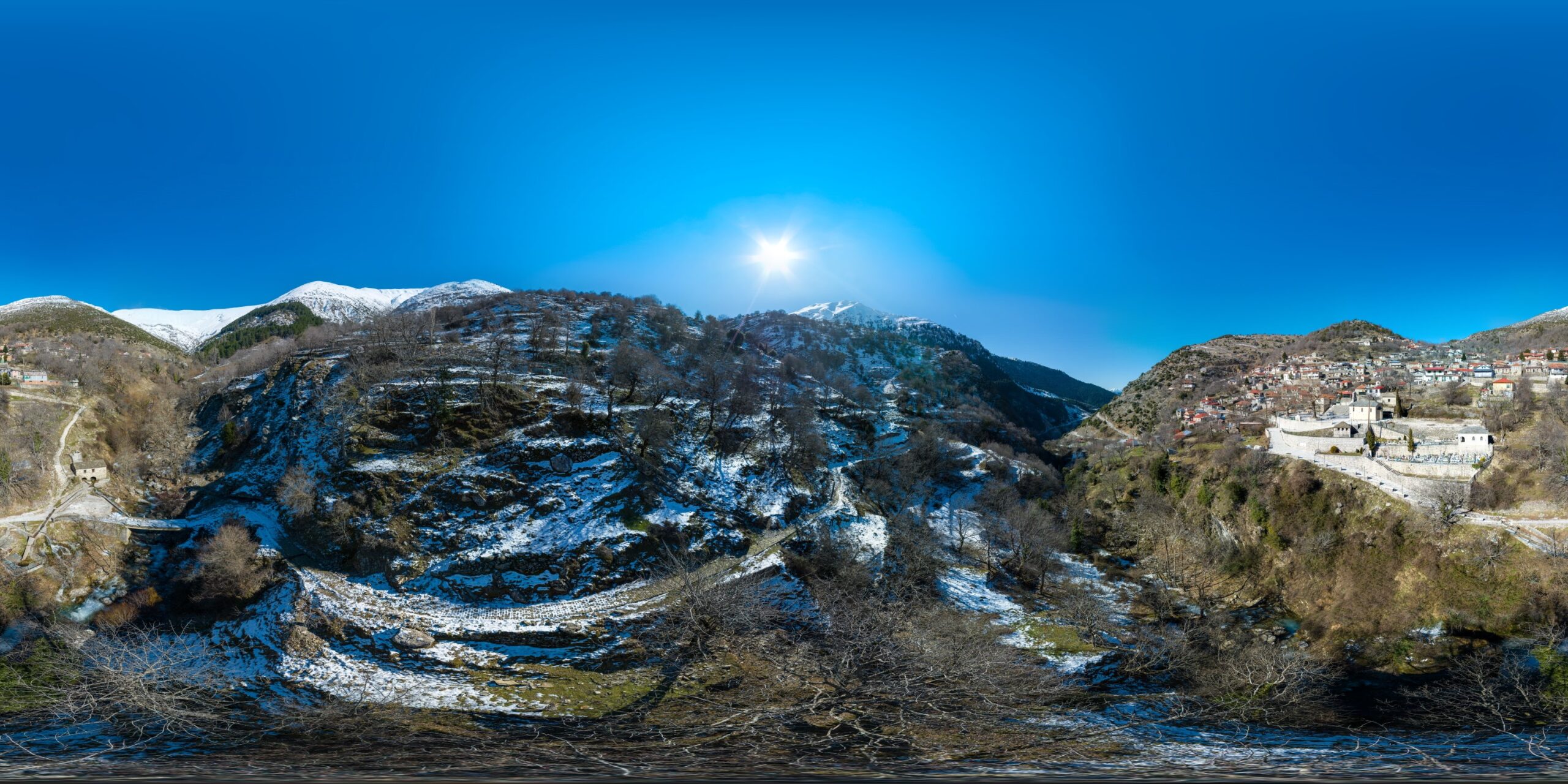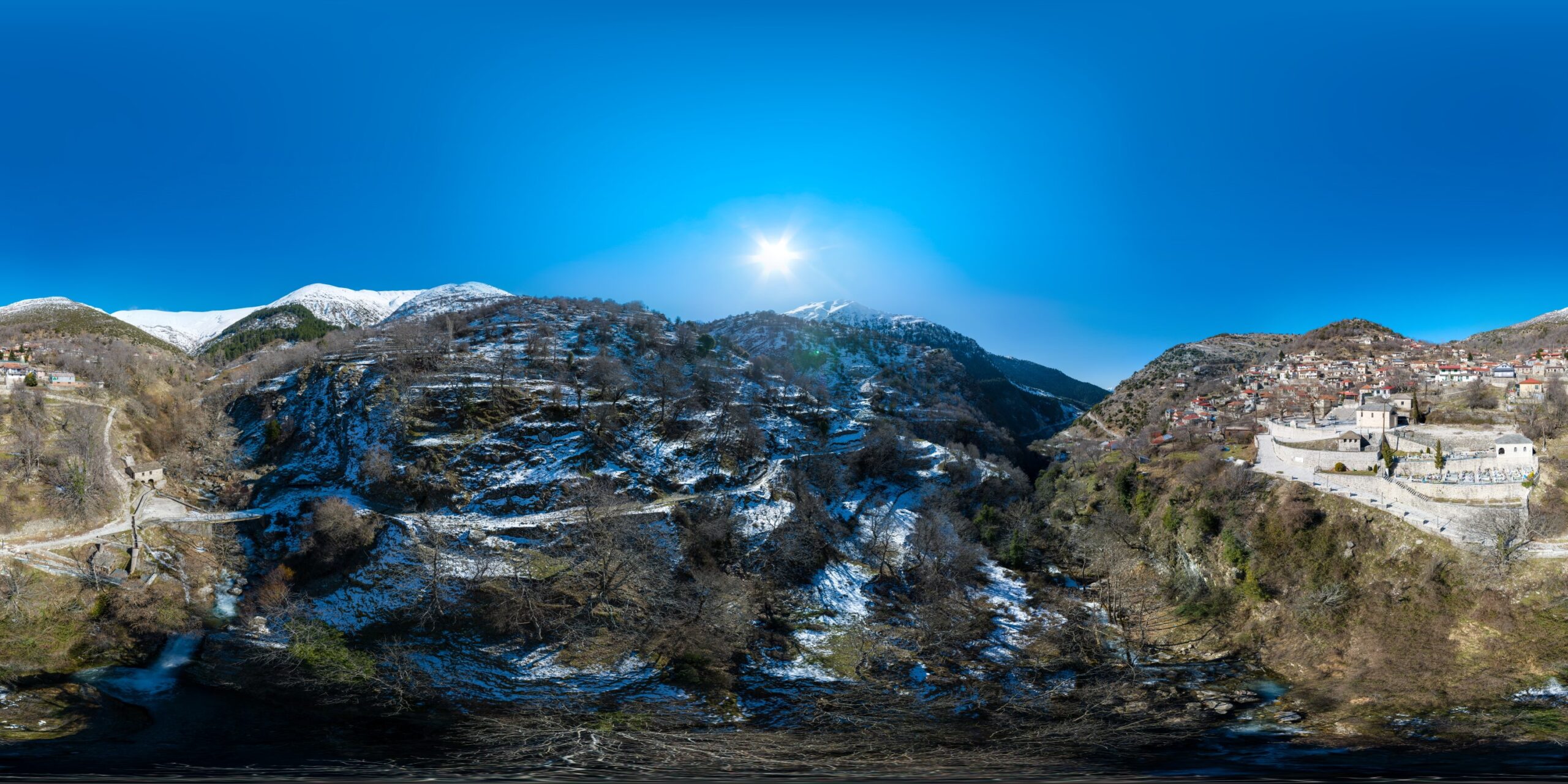At Matsouki village, on the Mouria river, stands the village watermill. Along with the fulling and the dristela, the artificial waterfall, the mill is part of the Agia Paraskevi church complex. On the ground floor there is the stone watermill with its schist slate roof. Inside, there is a small room on the north-east side […]
At Matsouki village, on the Mouria river, stands the village watermill. Along with the fulling and the dristela, the artificial waterfall, the mill is part of the Agia Paraskevi church complex. On the ground floor there is the stone watermill with its schist slate roof. Inside, there is a small room on the north-east side where the miller lived. There used to be a covered area for loading and unloading animals, which is now destroyed. Under the mill floor there is a visible arch where the waterwheel is housed. The river water was channelled in a ditch, pushed the waterwheel, which, in turn, drove the smooth circular movement of the grinding stone at a steady rotation frequency. The grinding stones were round, placed one on top of the other. Cereal grain was placed in-between the stones and ground.
The watermill has been restored to its initial form and visitors can see the two grinding stones and the wooden cases, where various grains (wheat, maize, barley) to be ground were placed, as well as the coarse salt used to be mixed with the sheep feed. The mantani, the full mill, was a water-powered installation for processing woollen cloth. The water flowed along the ditch and driven into an upward wooden pipe; the pressure created set the waterwheel placed vertically in motion and activated four wooden arms. These, moving in succession, beat the cloth spread on a thick plank, 2m long and 80cm wide.
The mantani is still used today. The dristela, with its wooden staves is at the front, close to the full mill. A wooden channel, almost vertical, and at a height of 3.40m, sent the water to the dristela and the whirlpool created washed the cloth to soften its texture. These artificial waterfalls were used for cleaning and processing woven woollen items.



